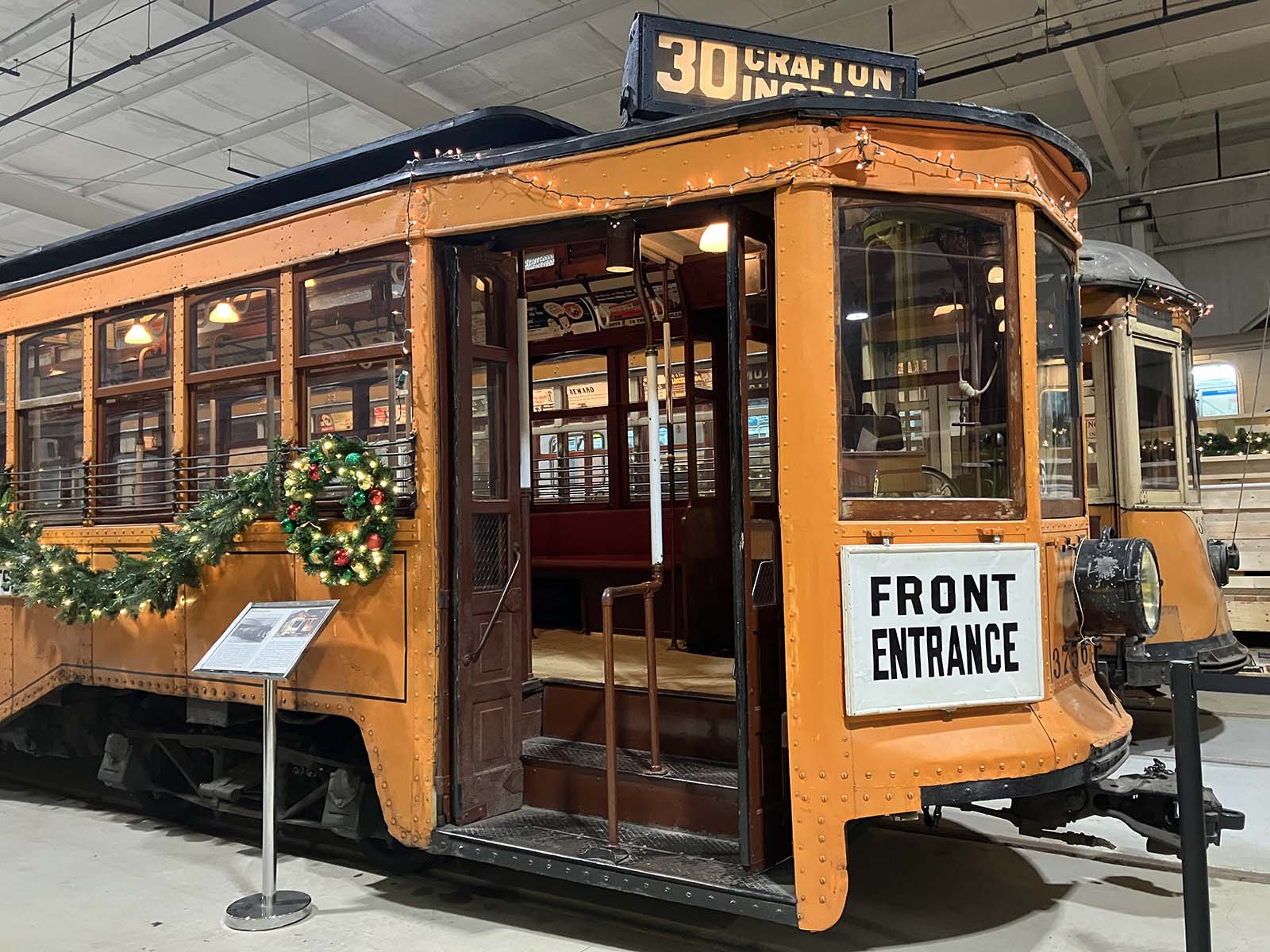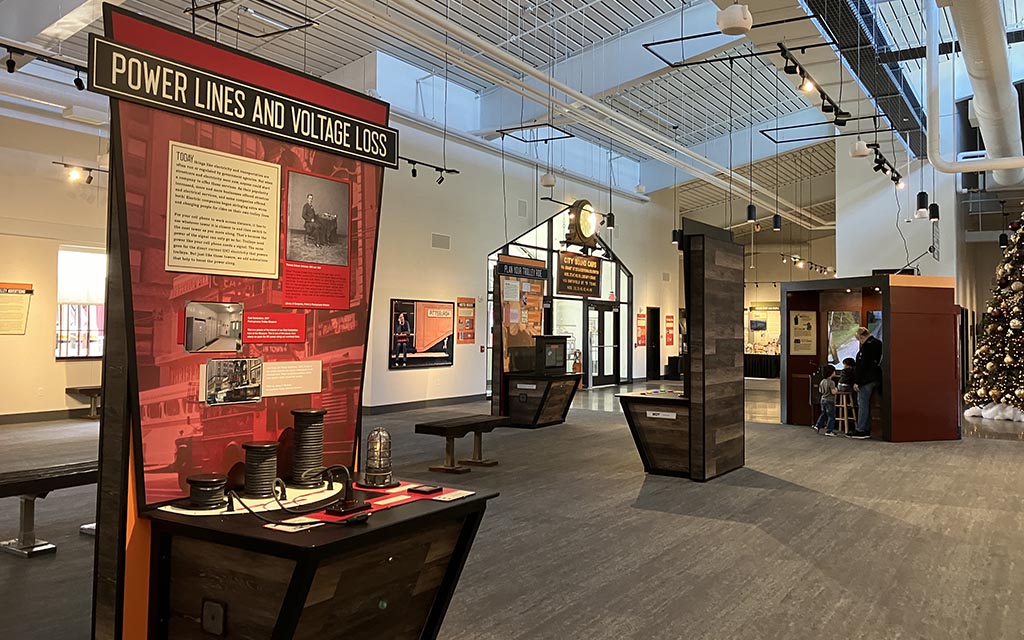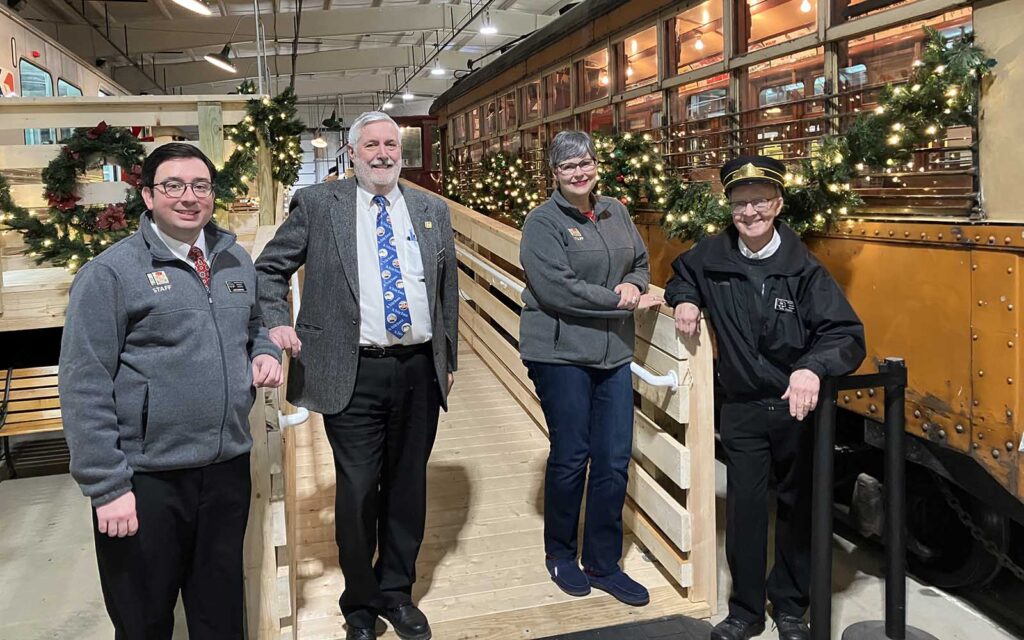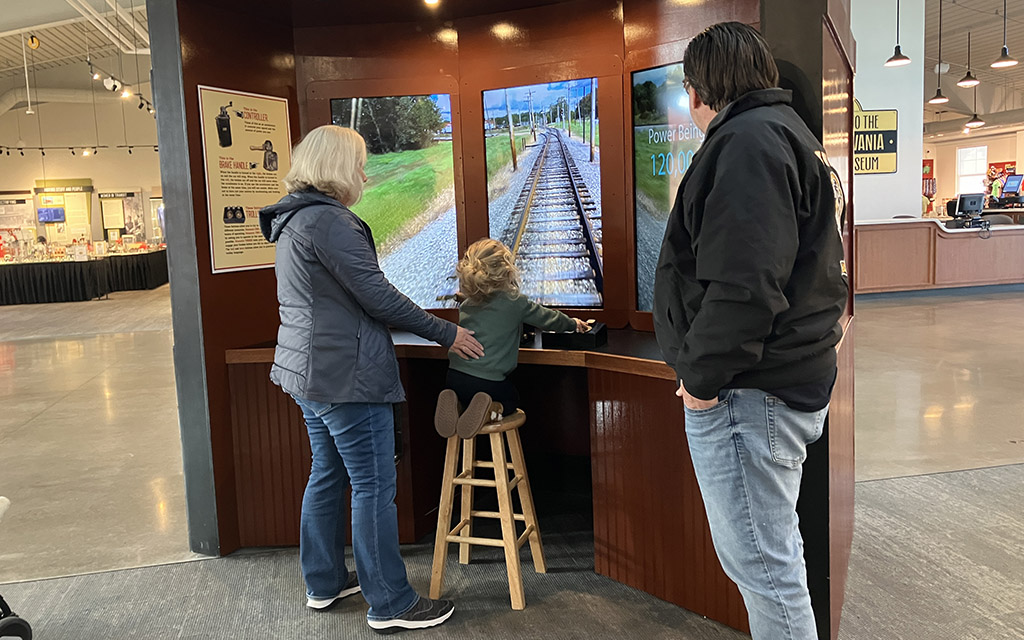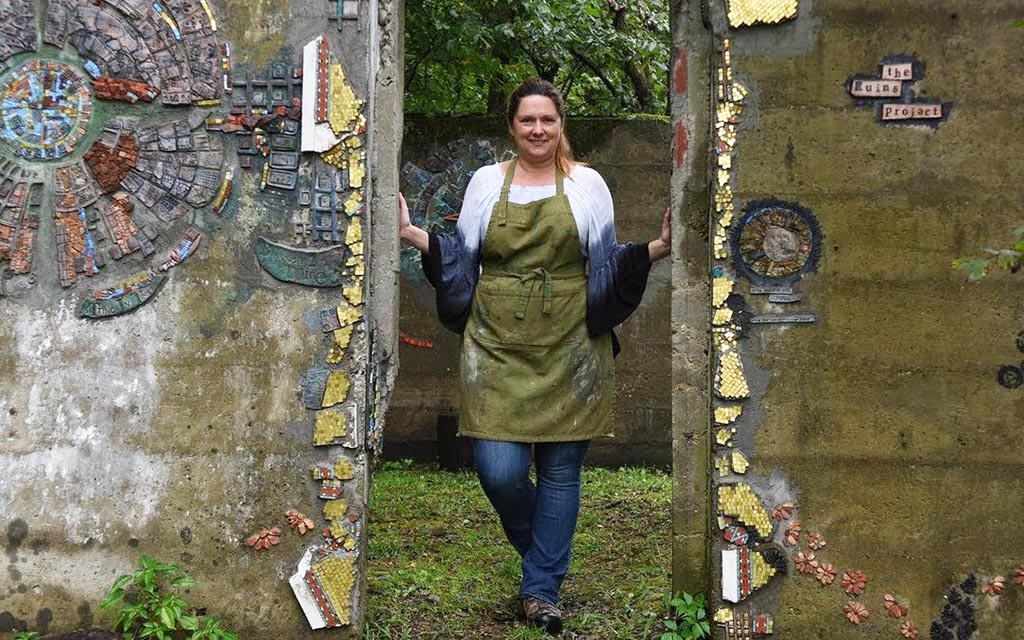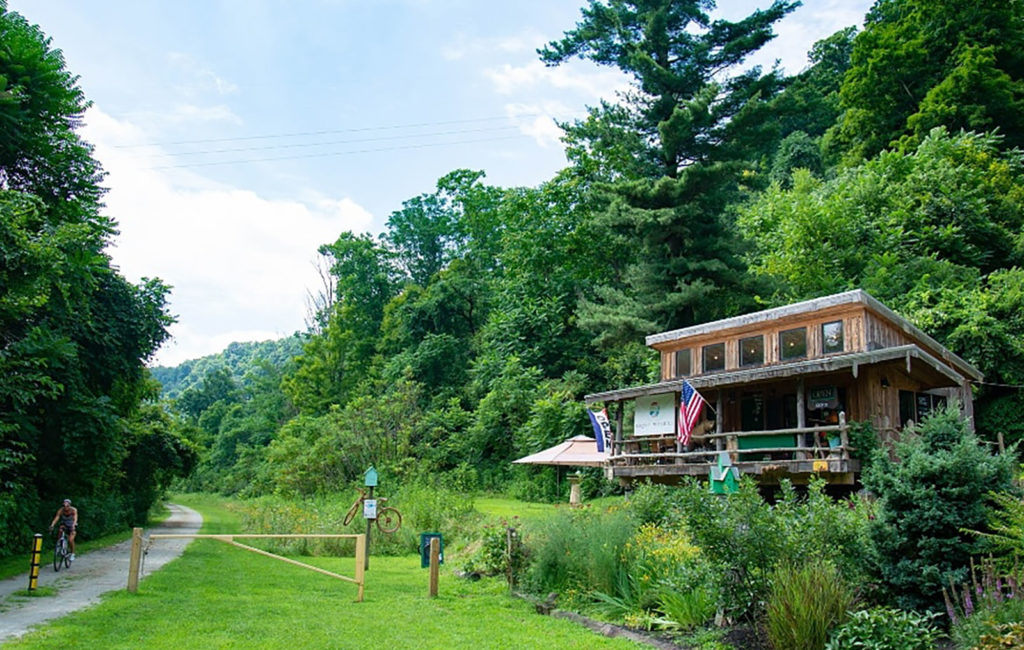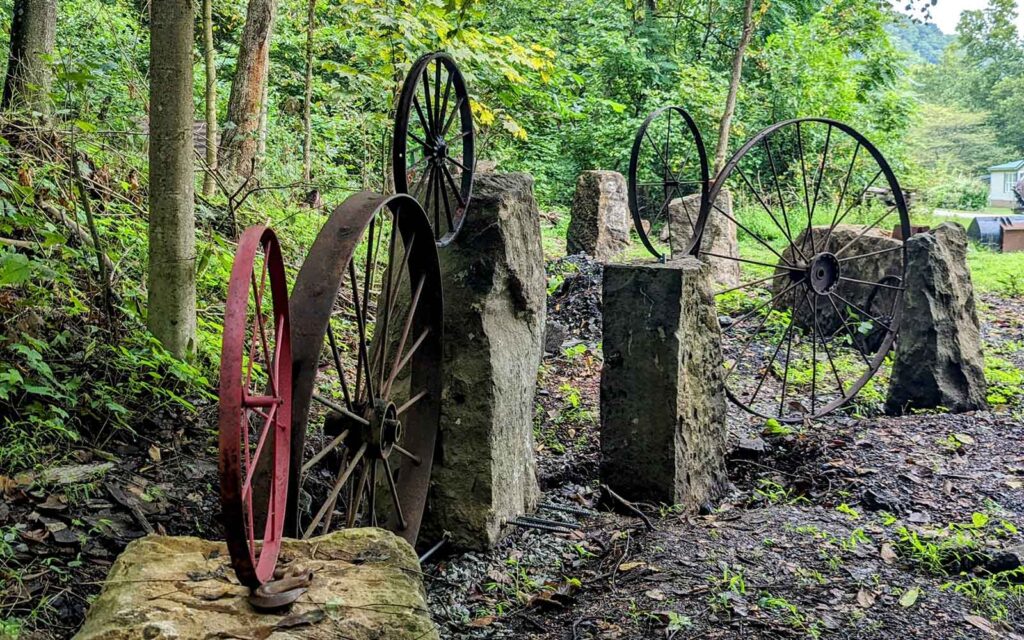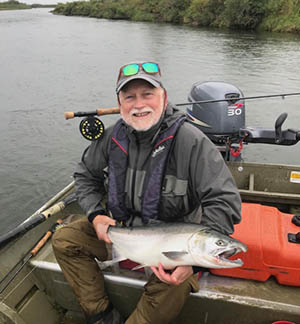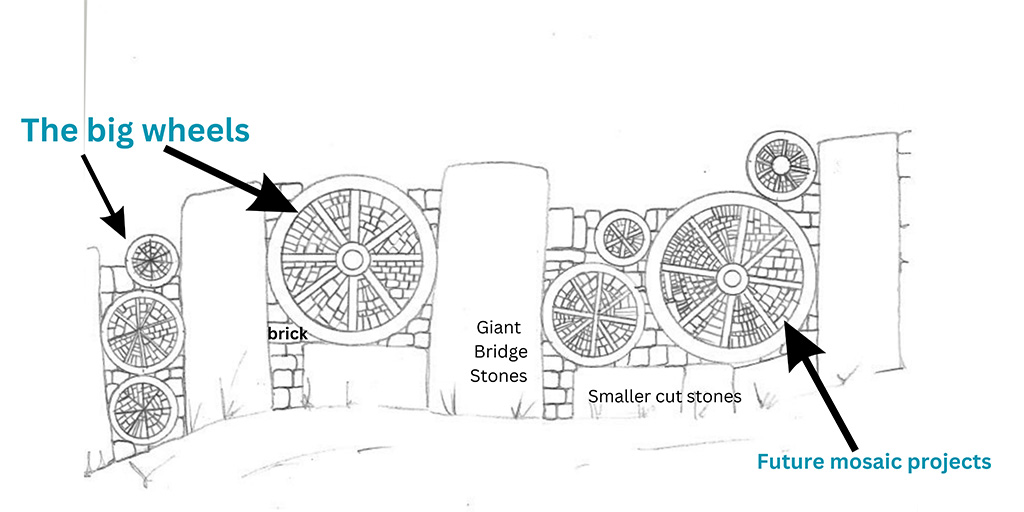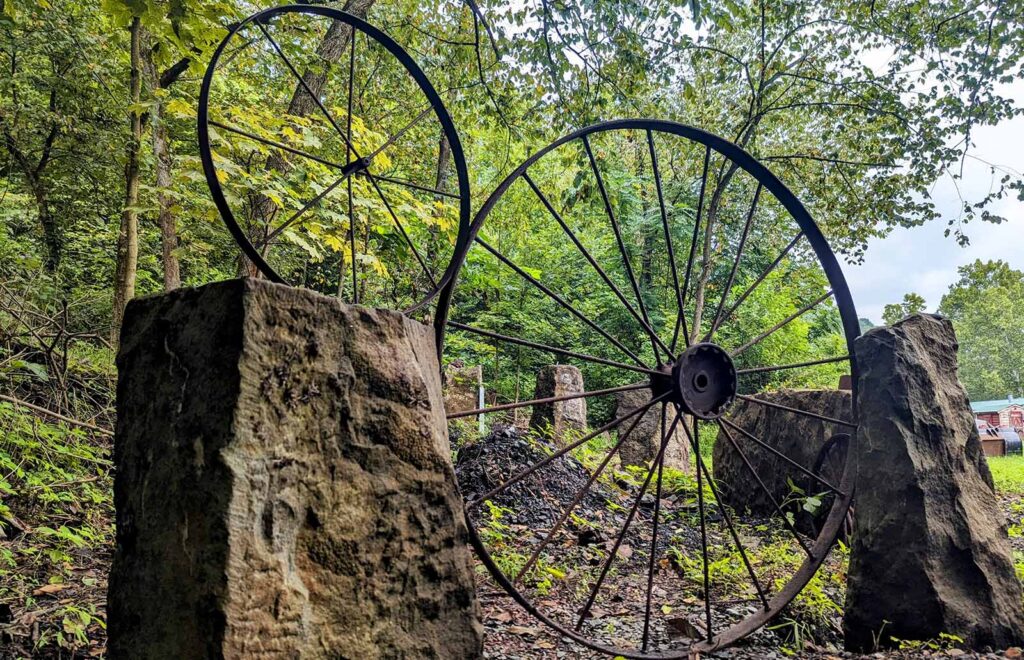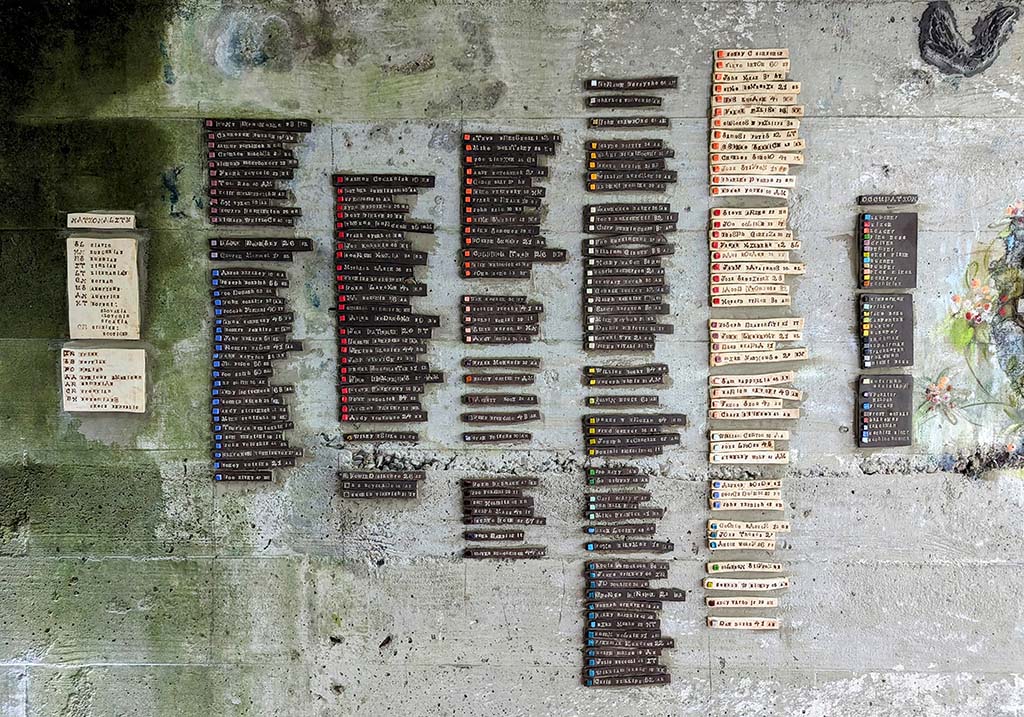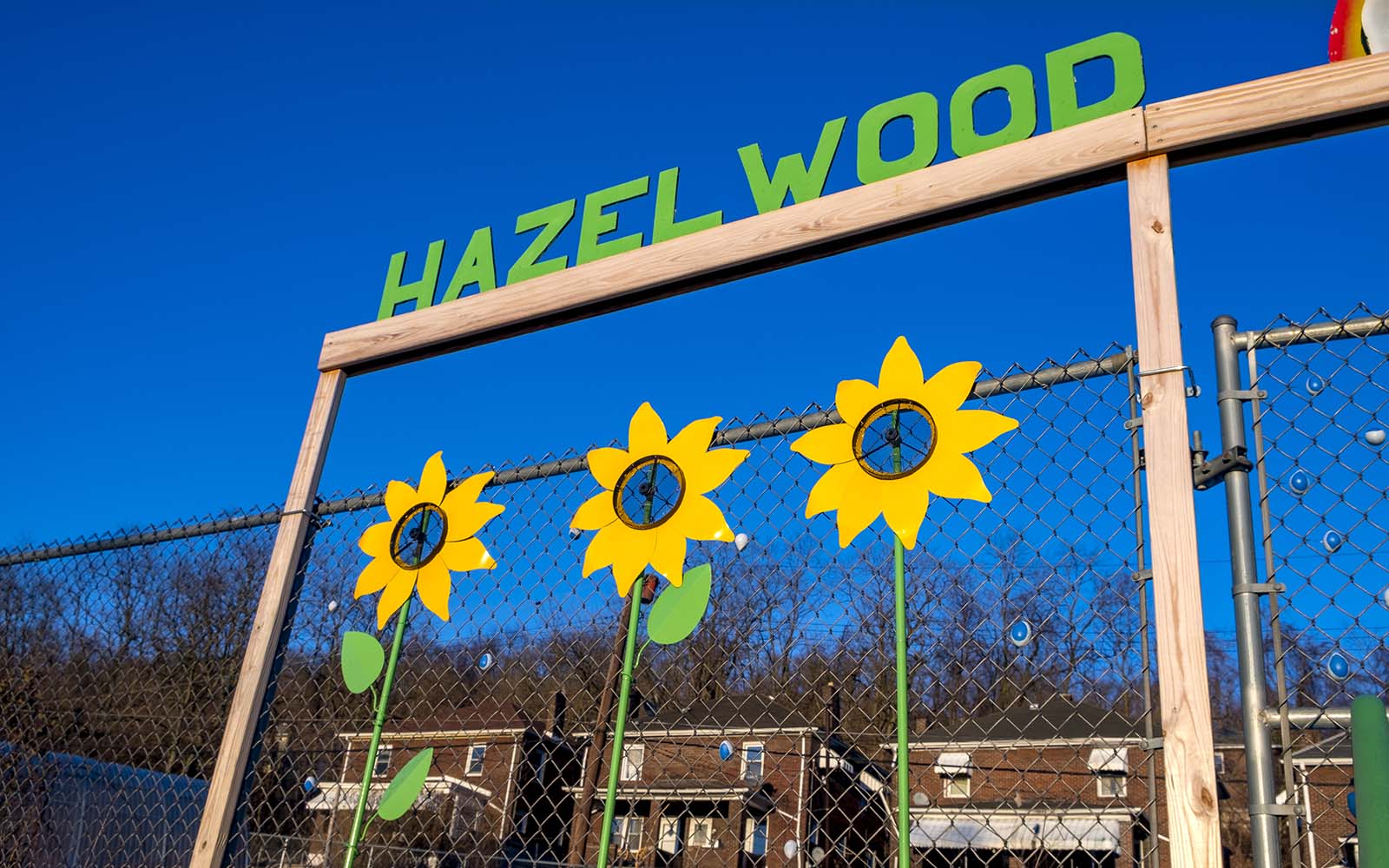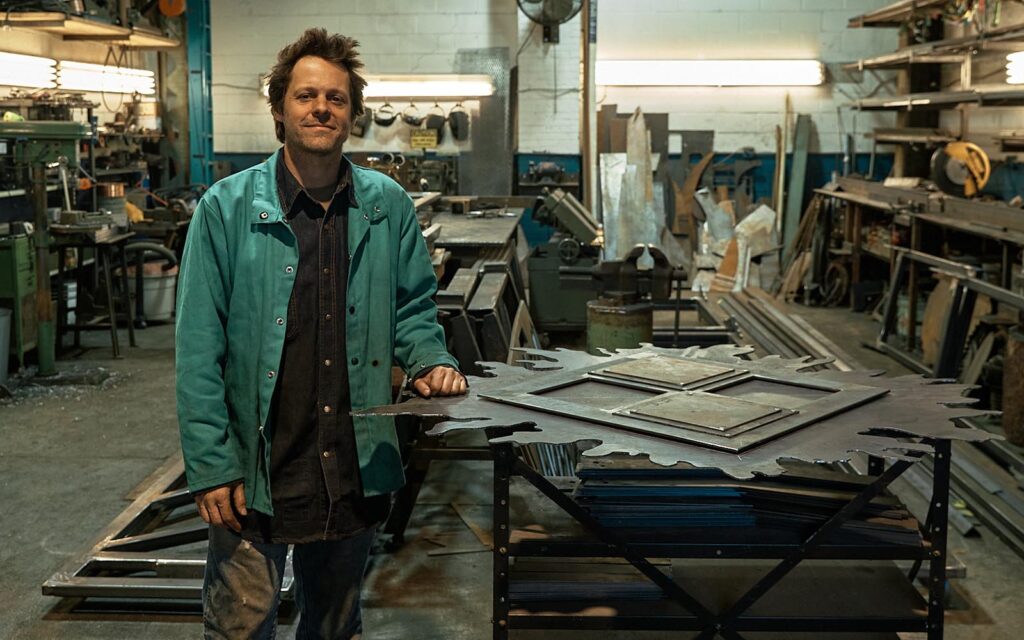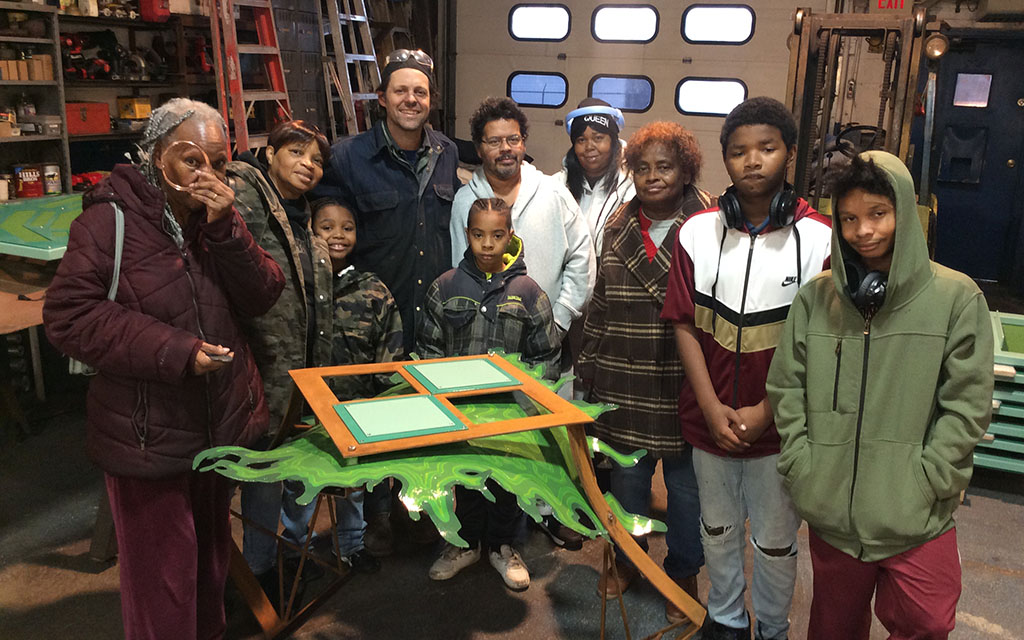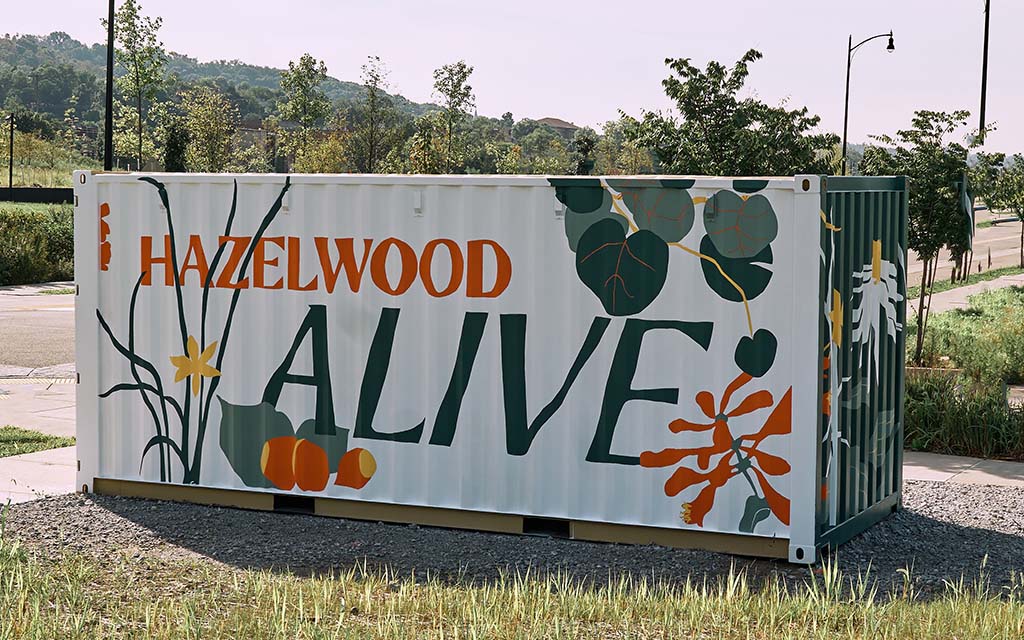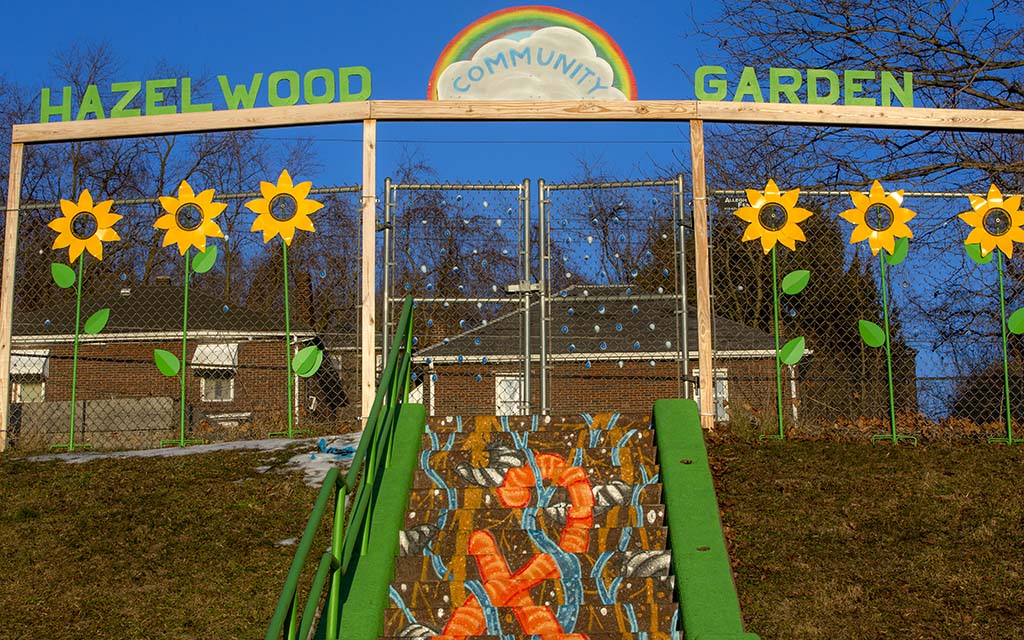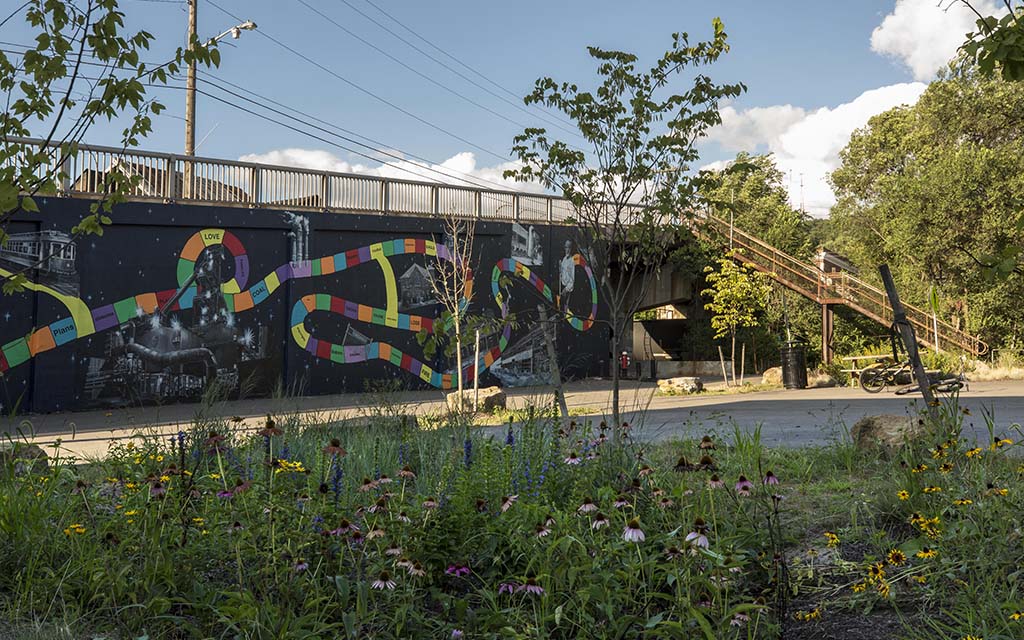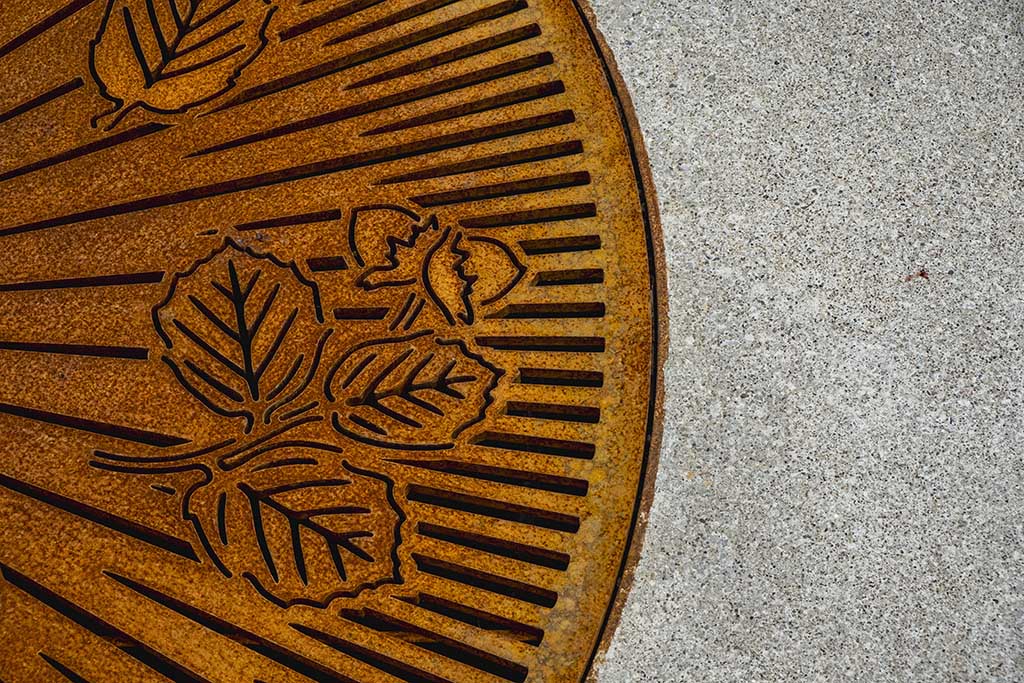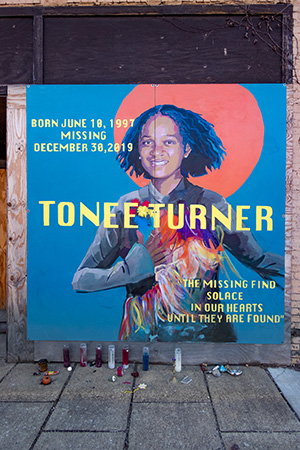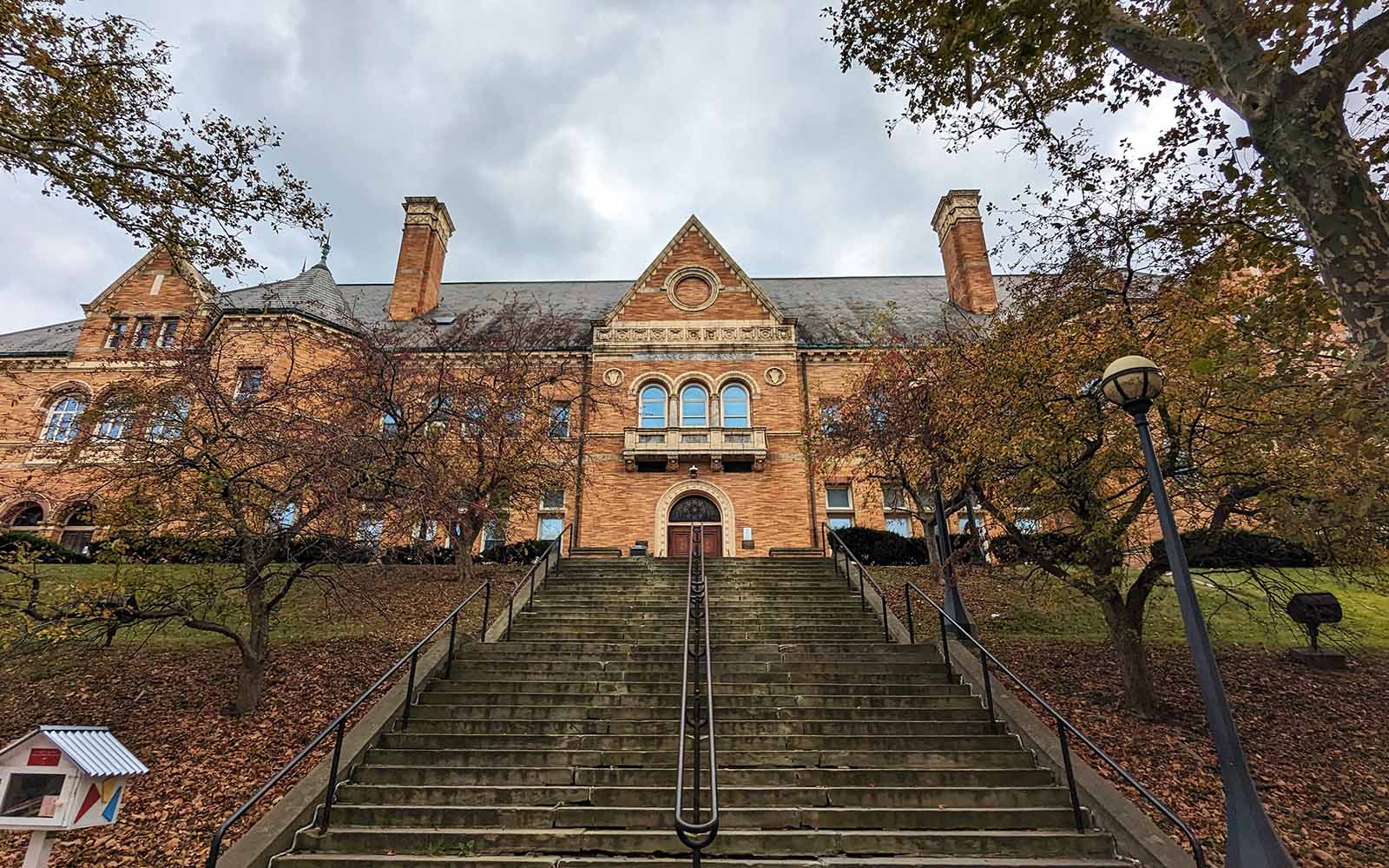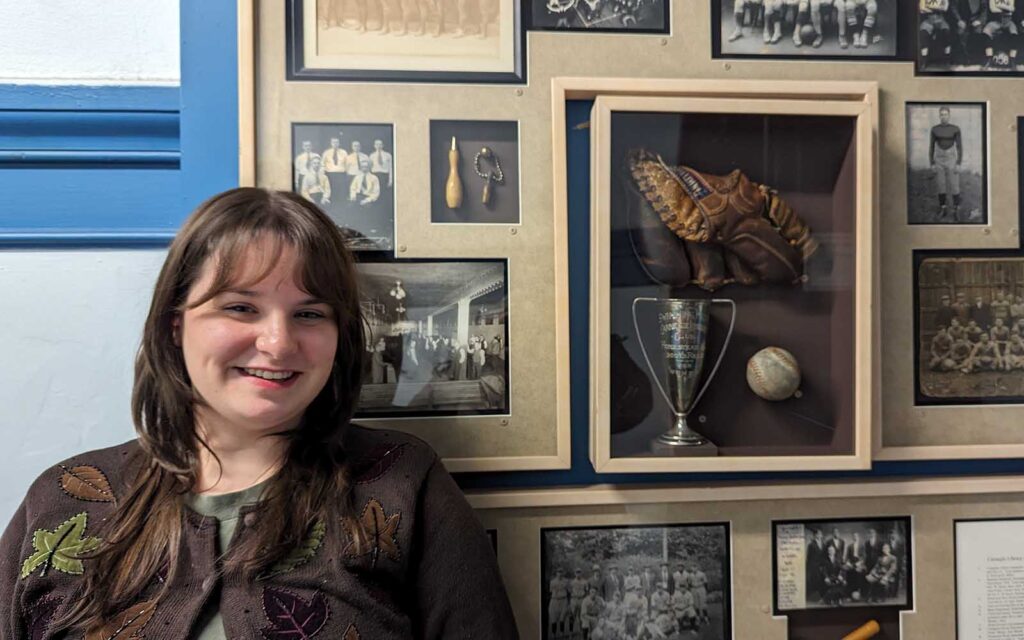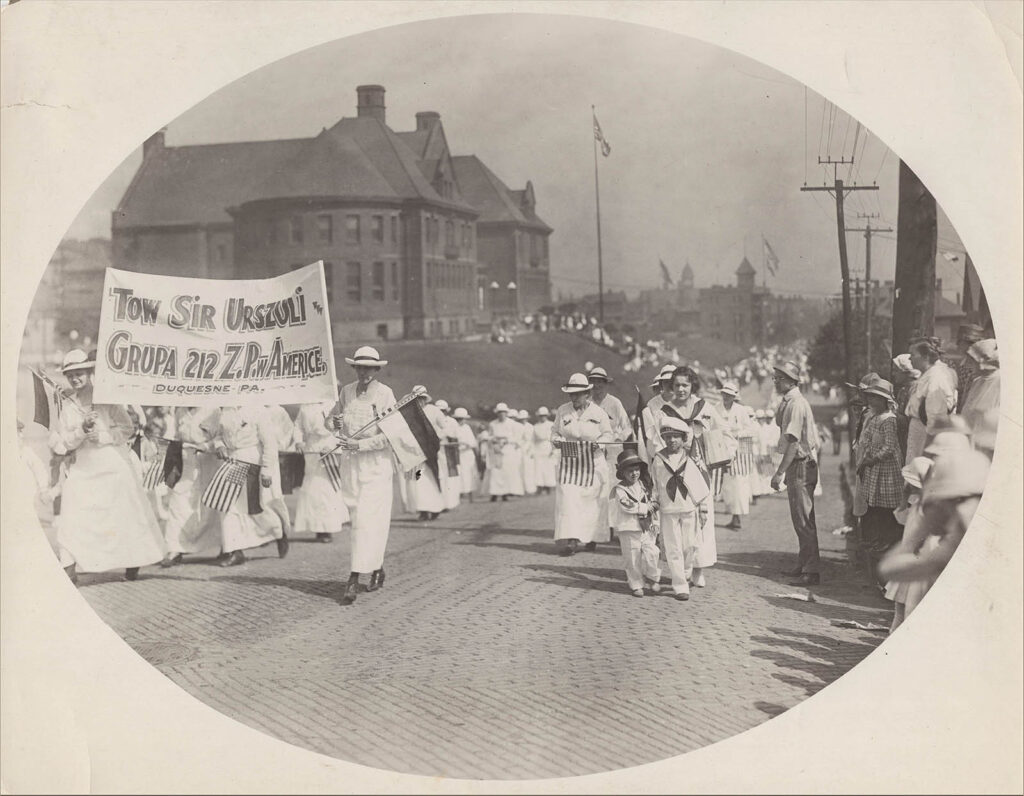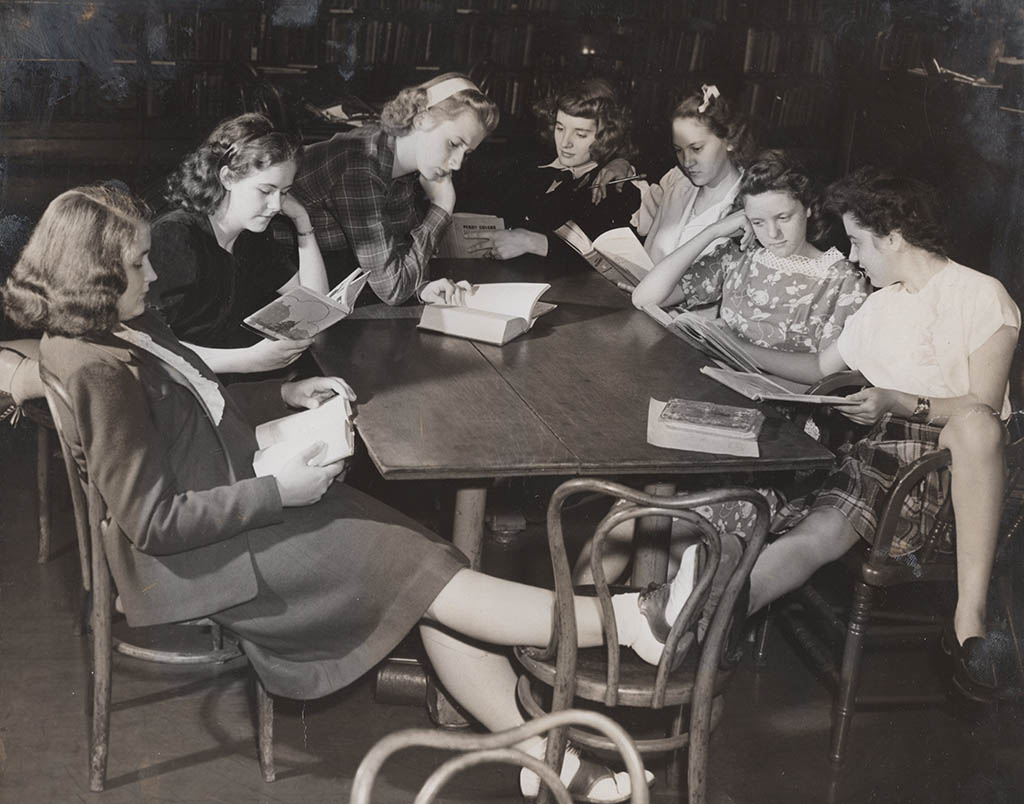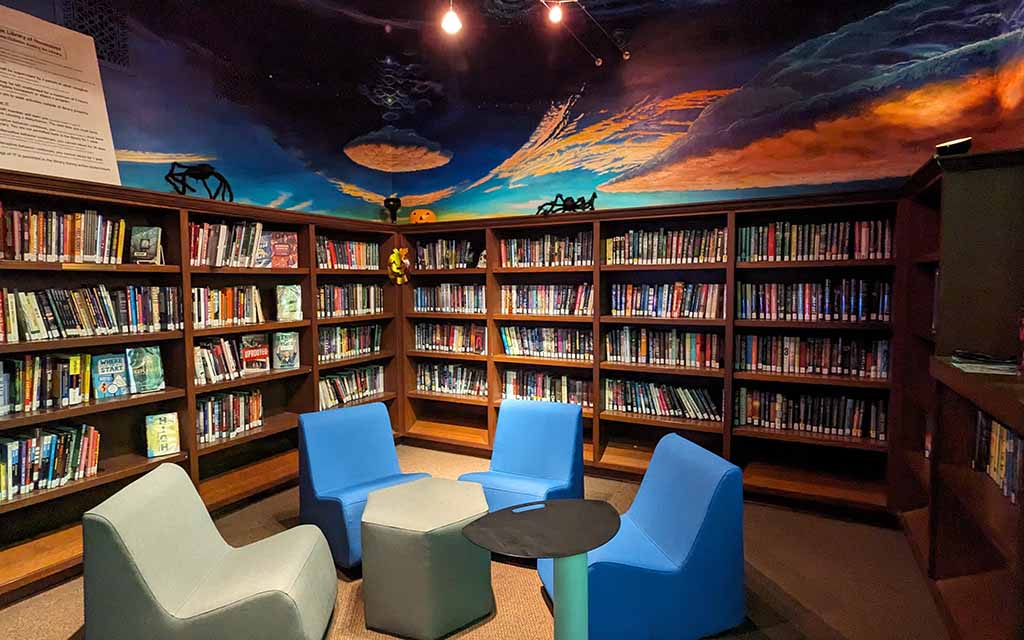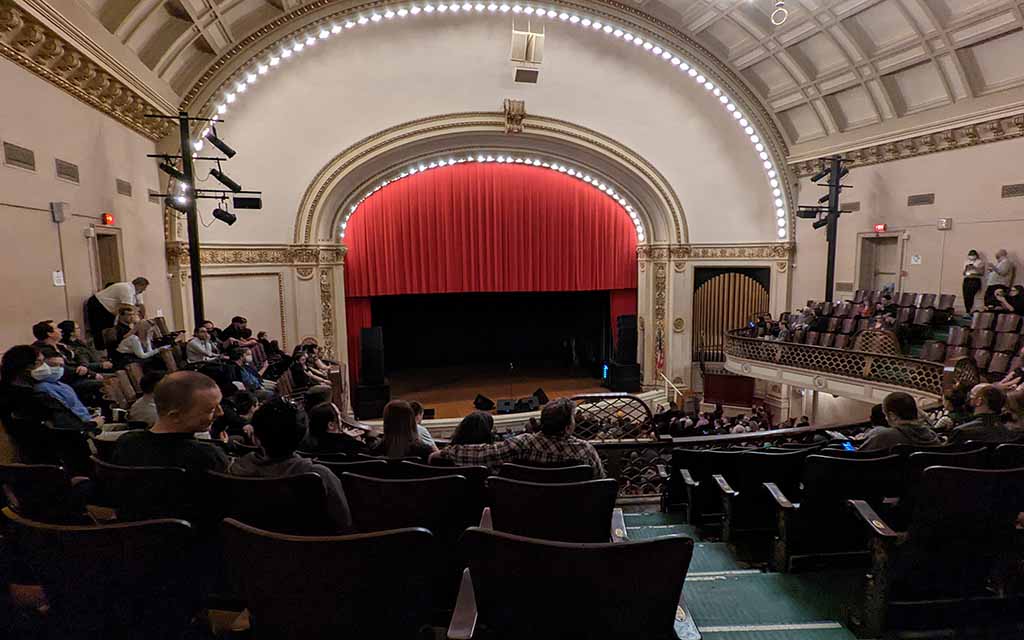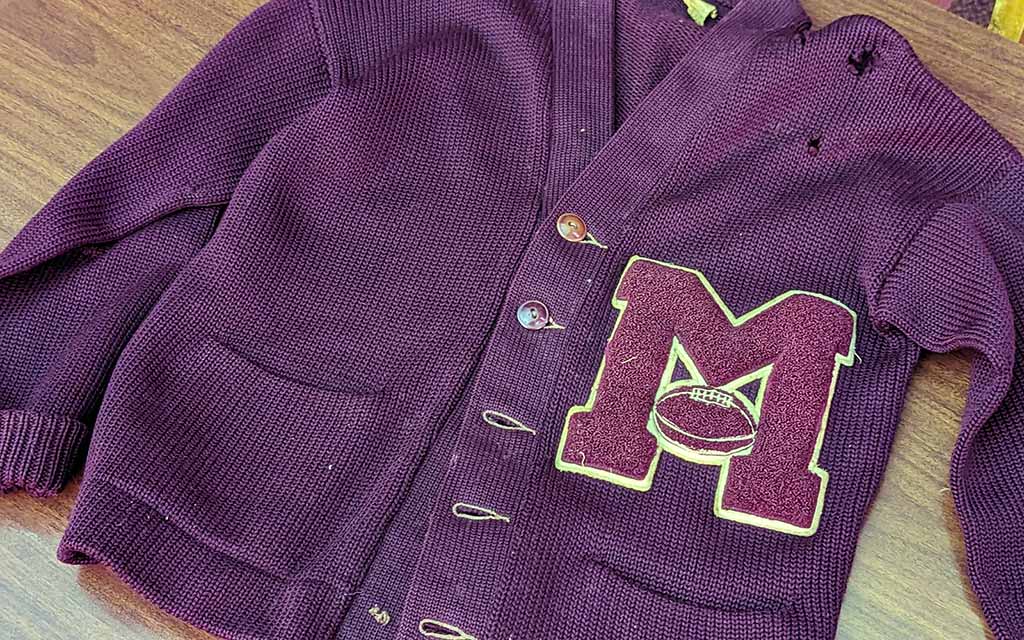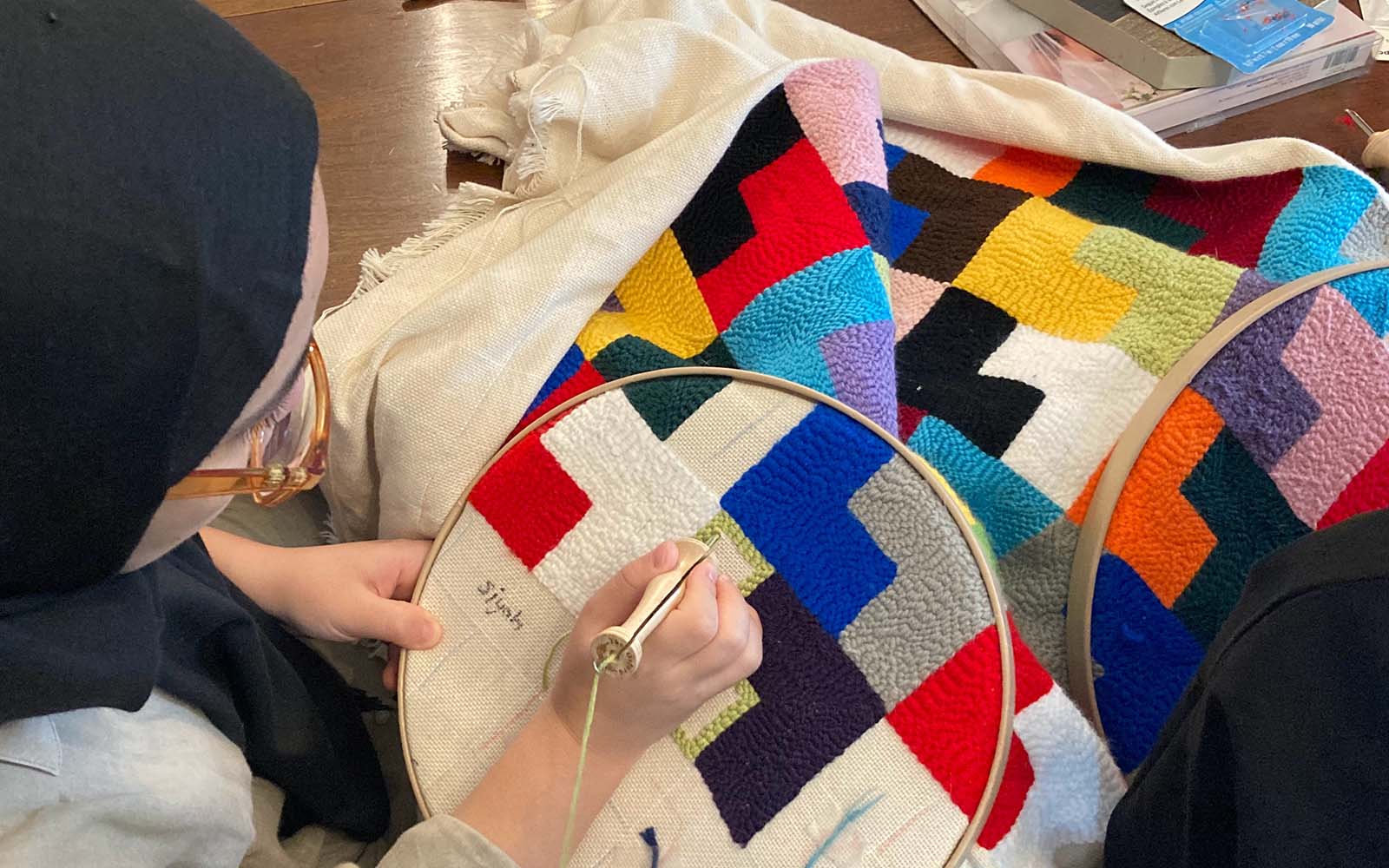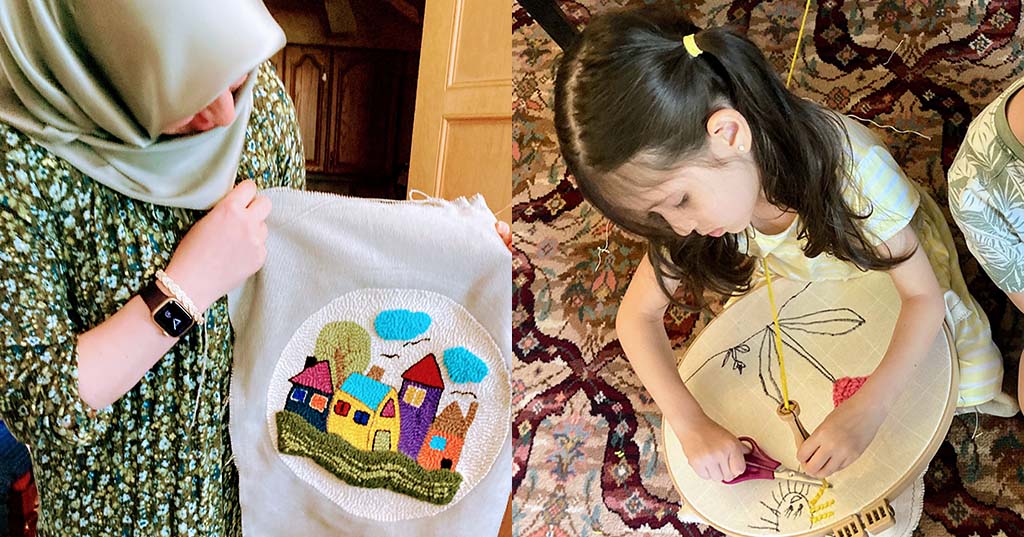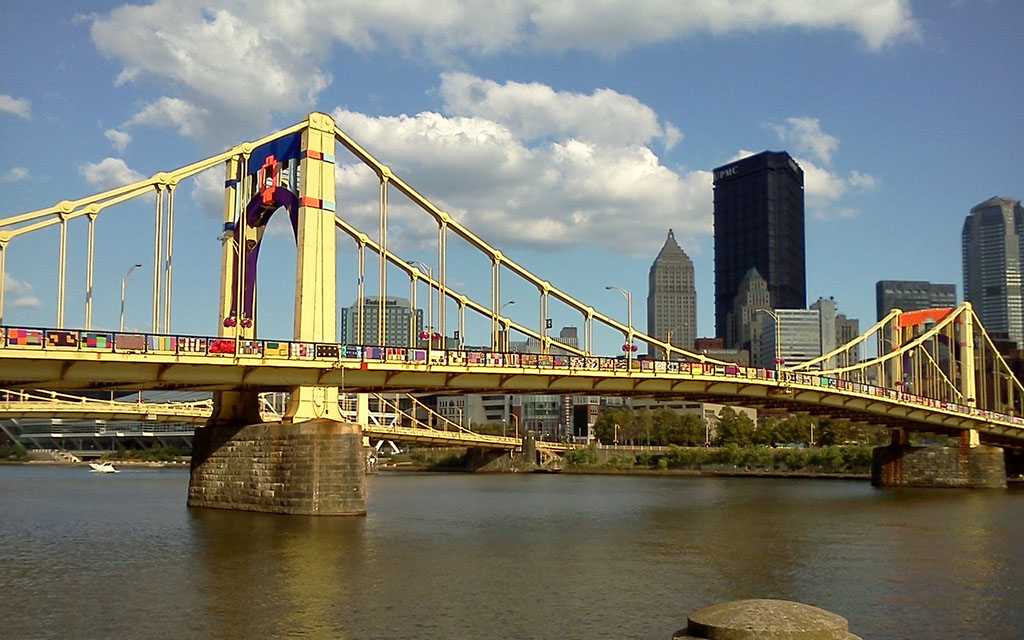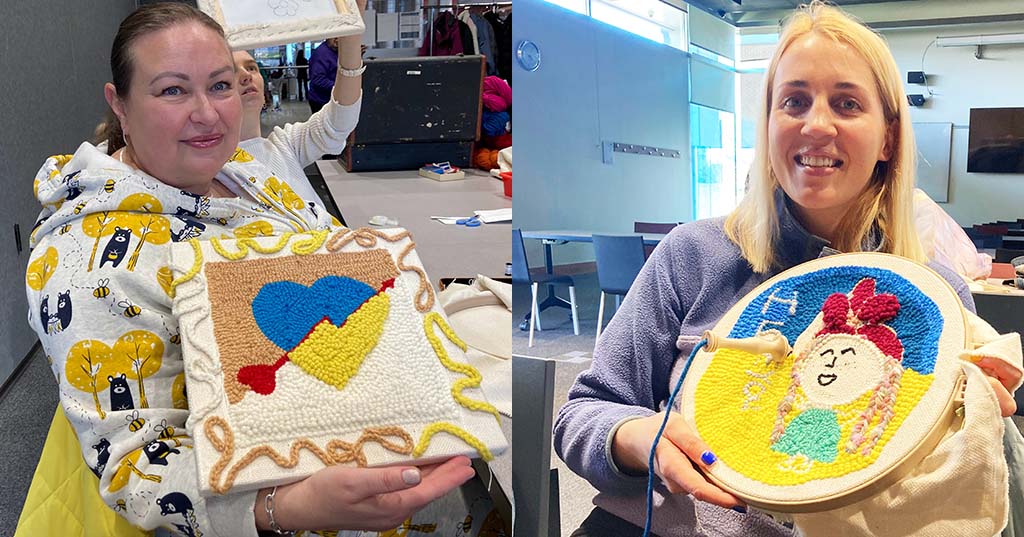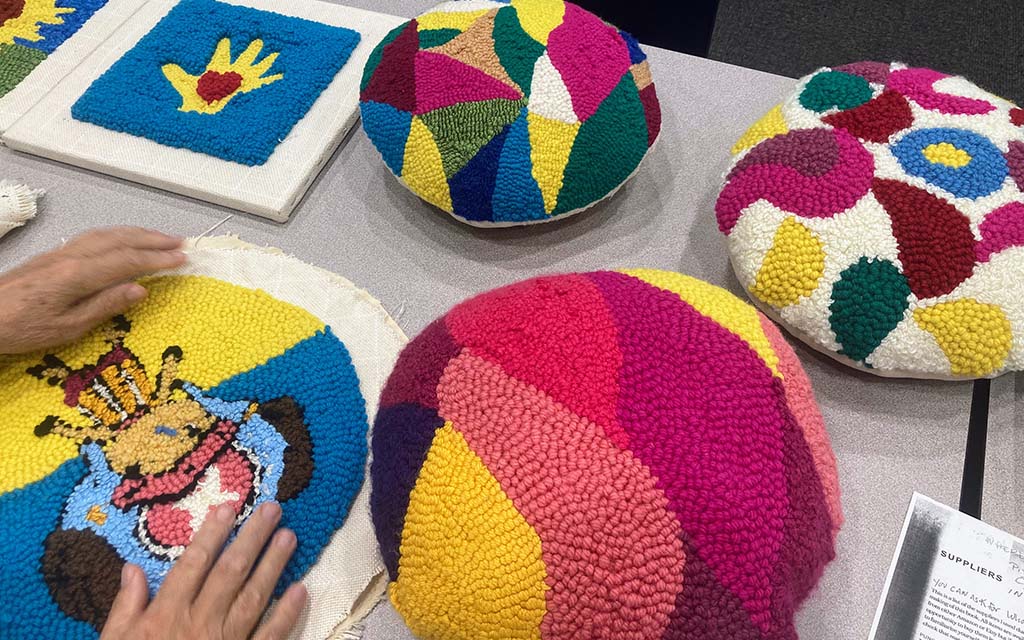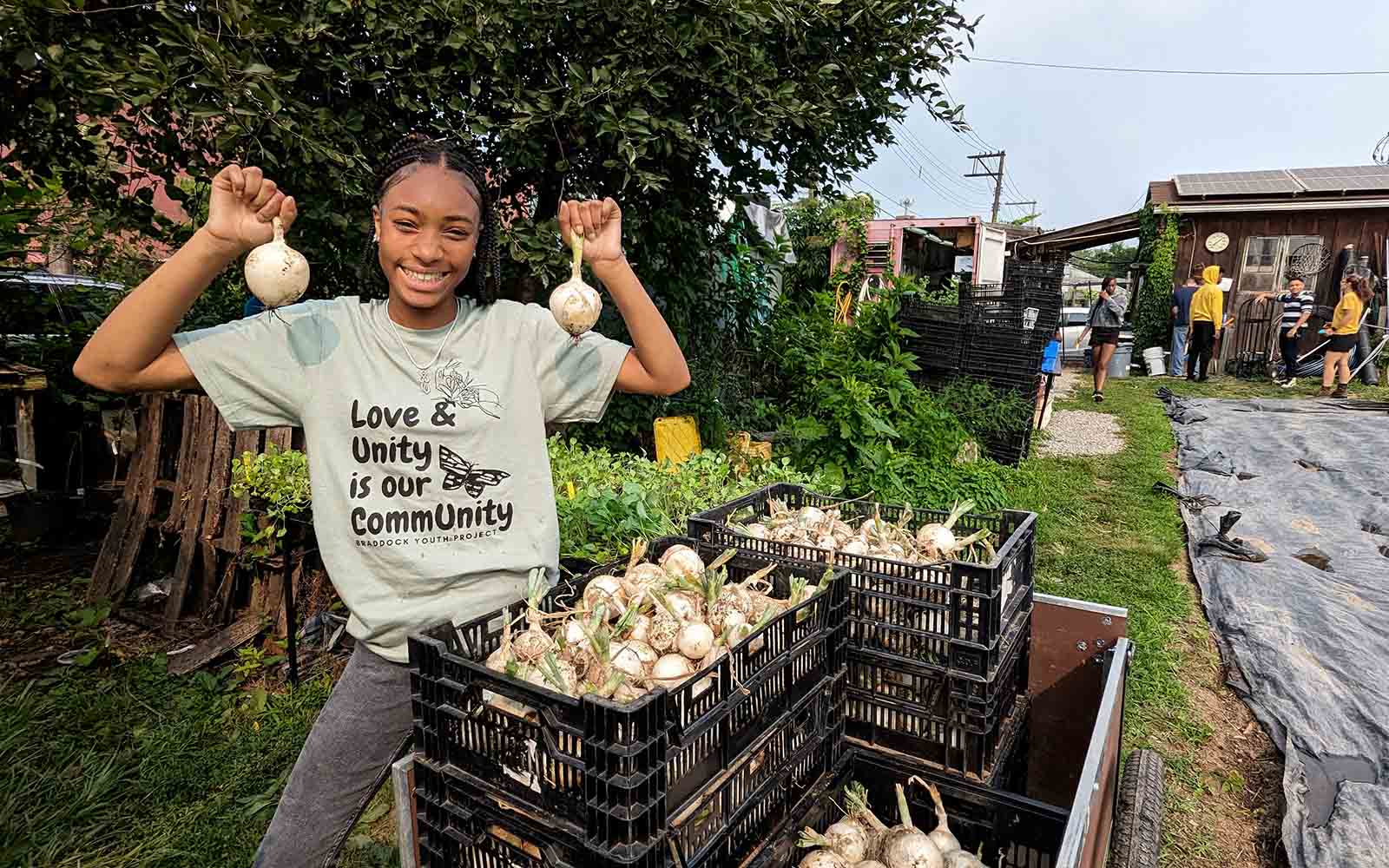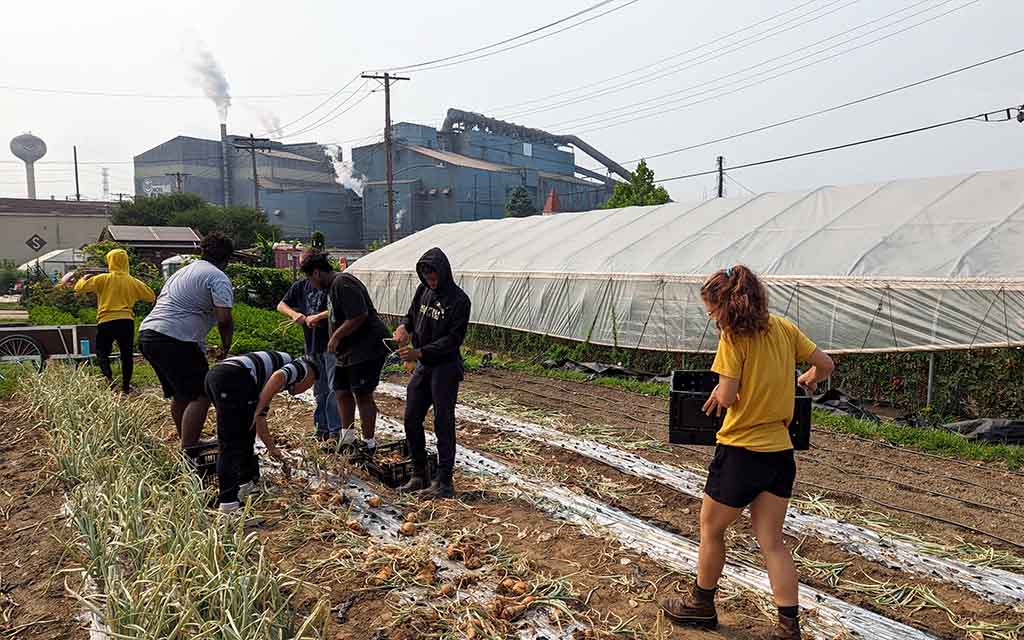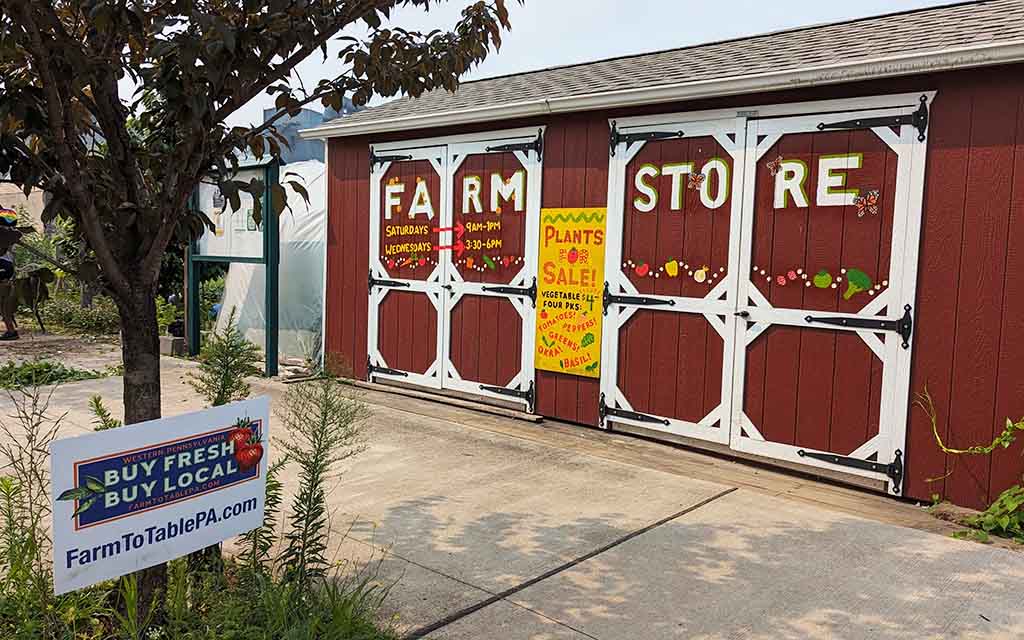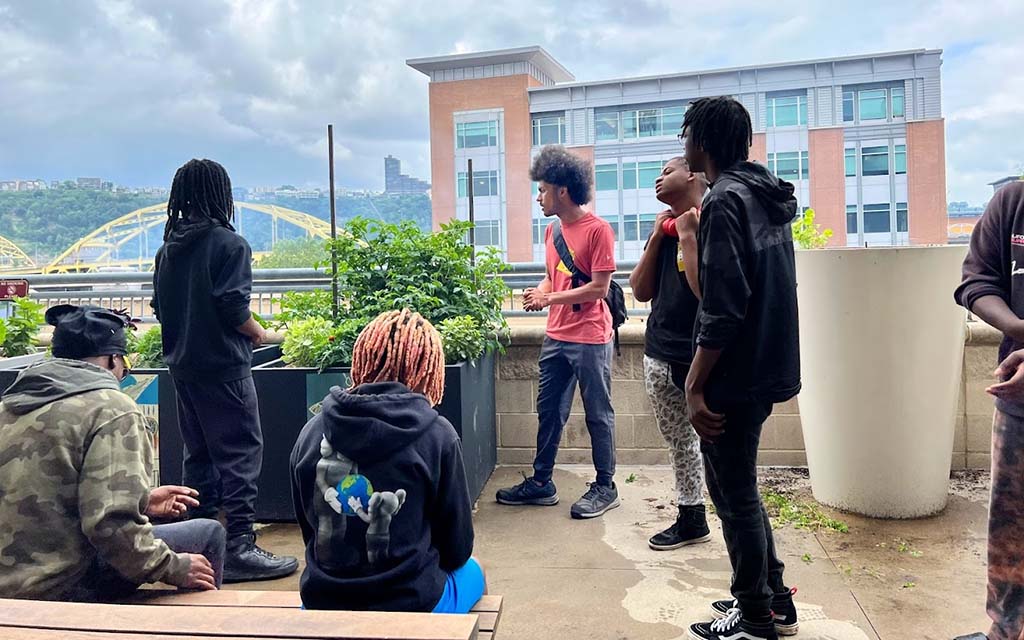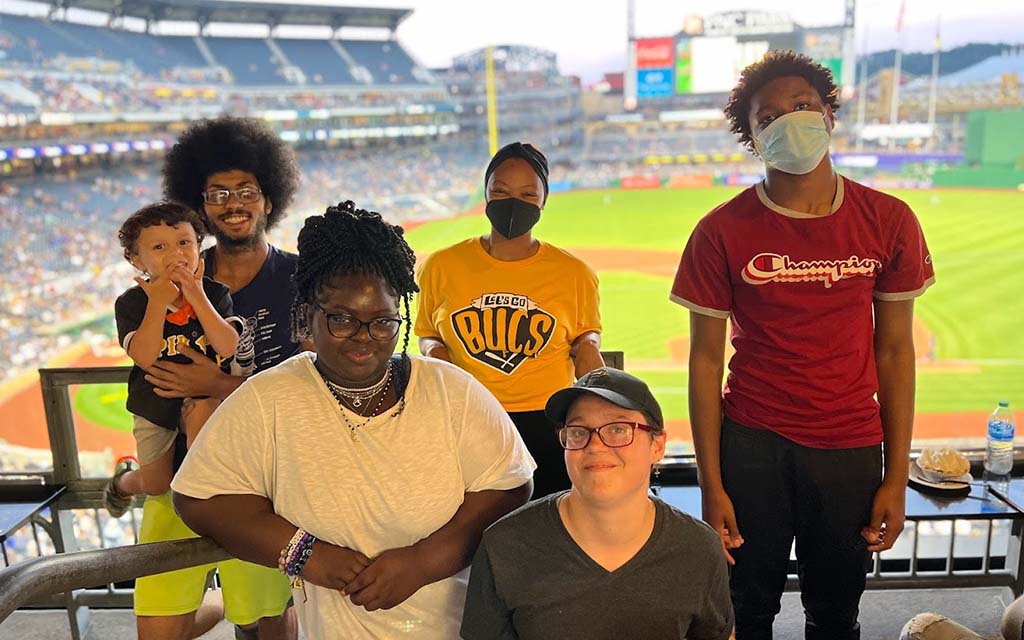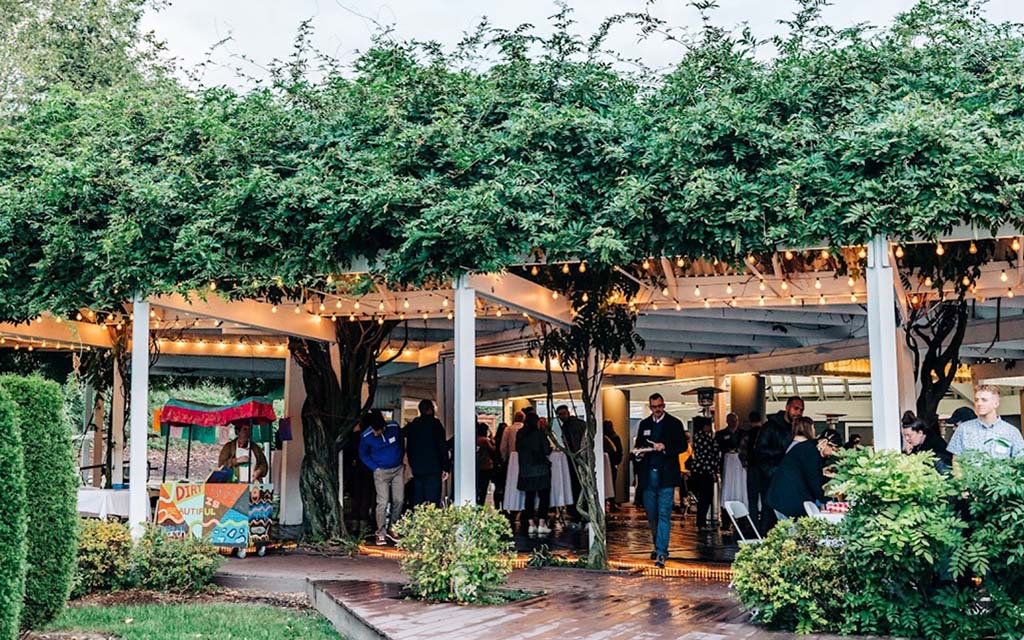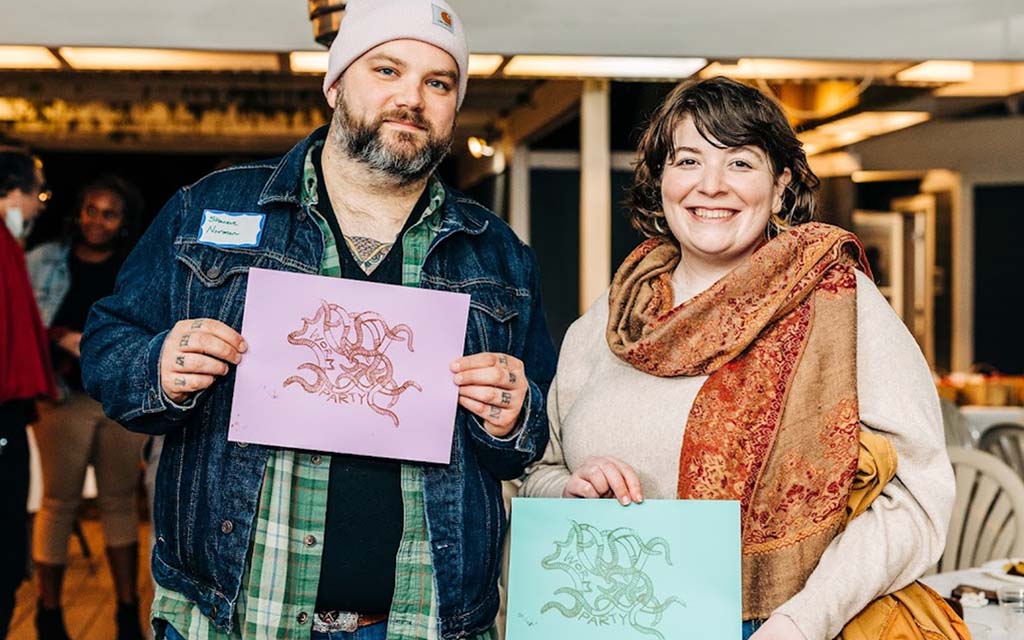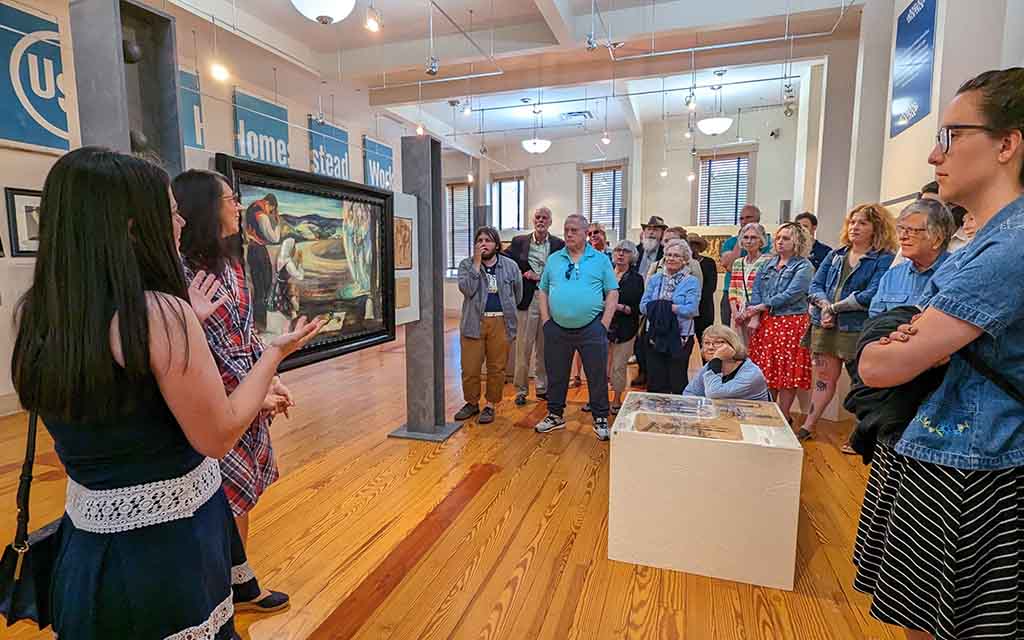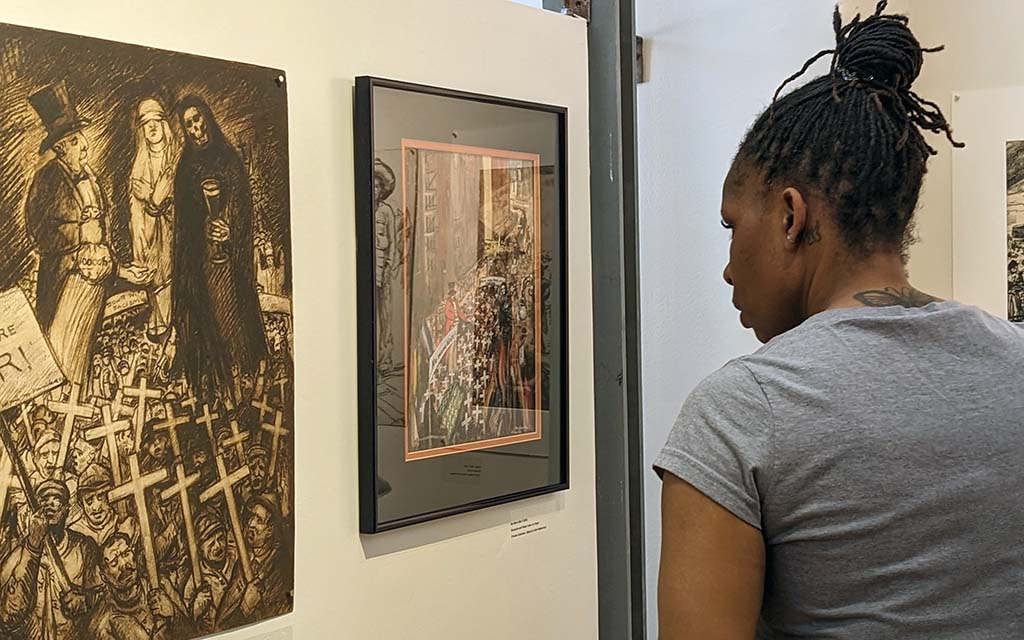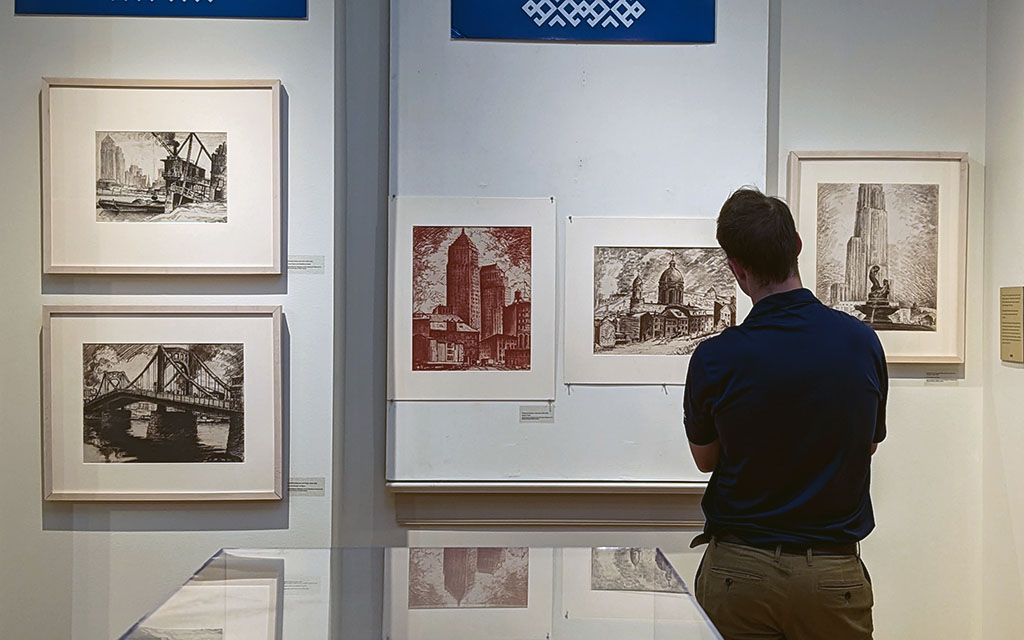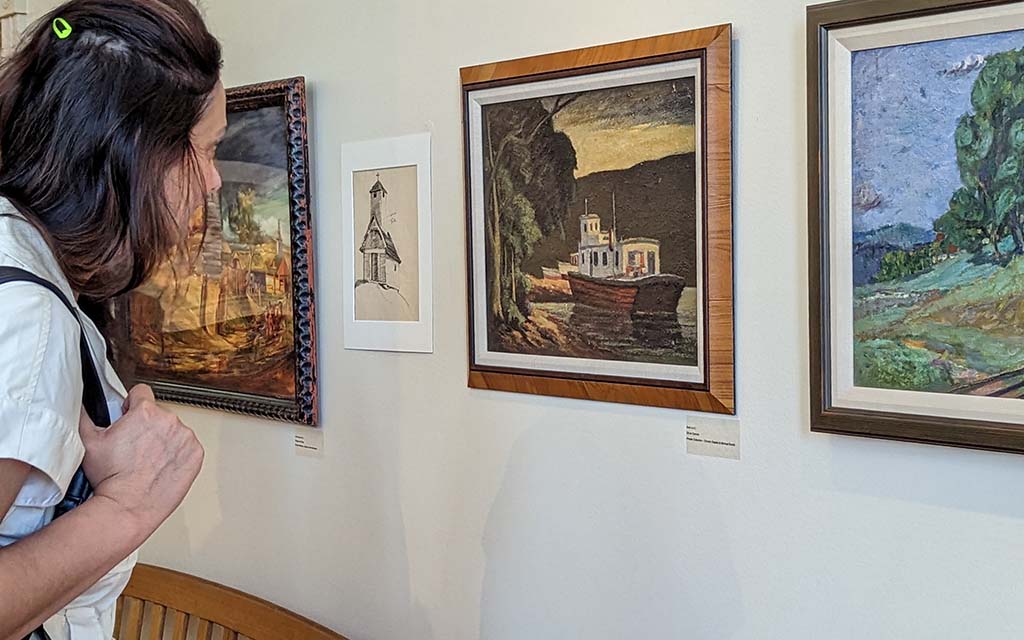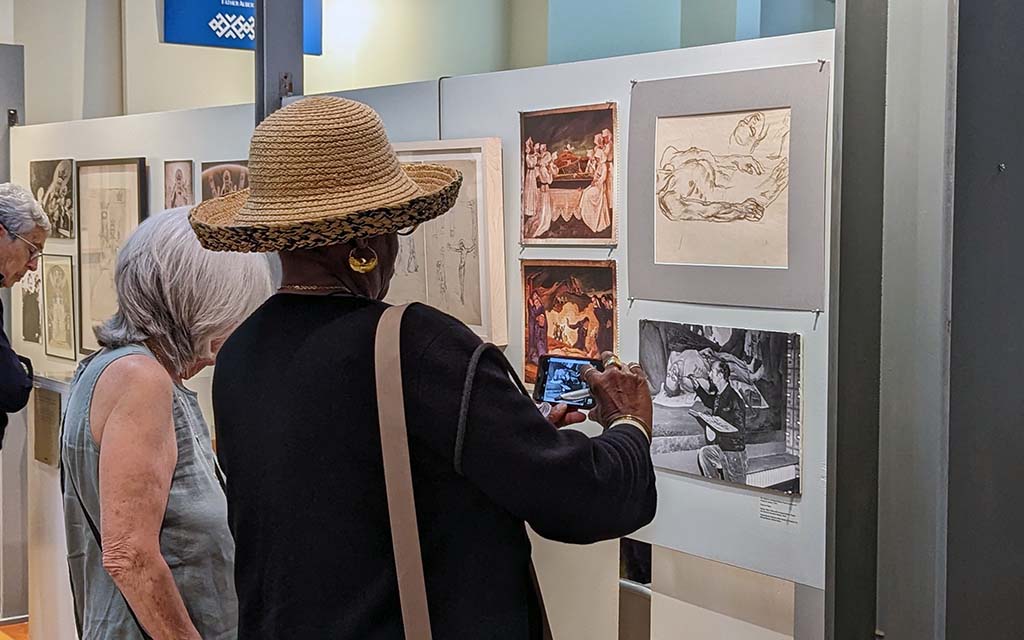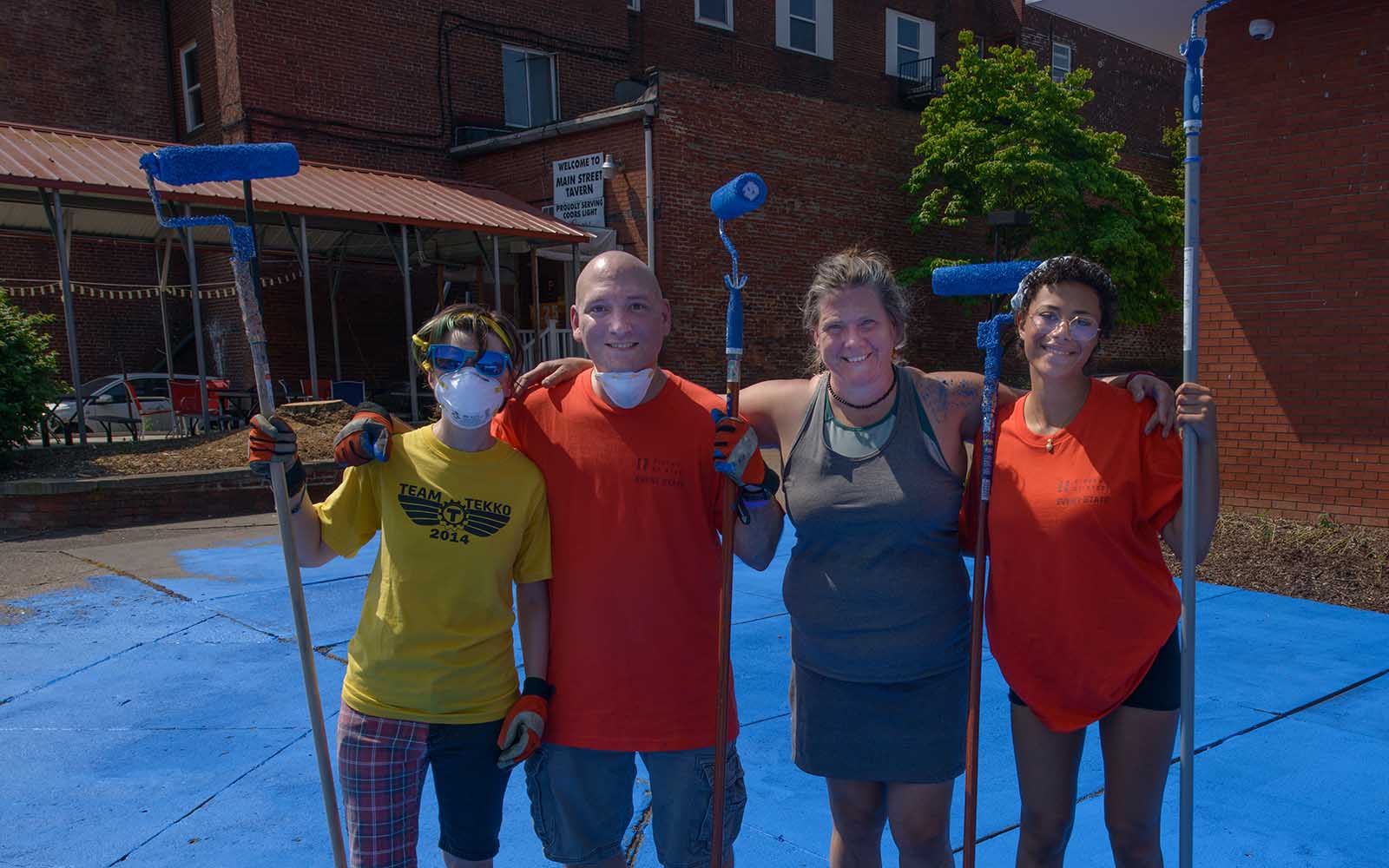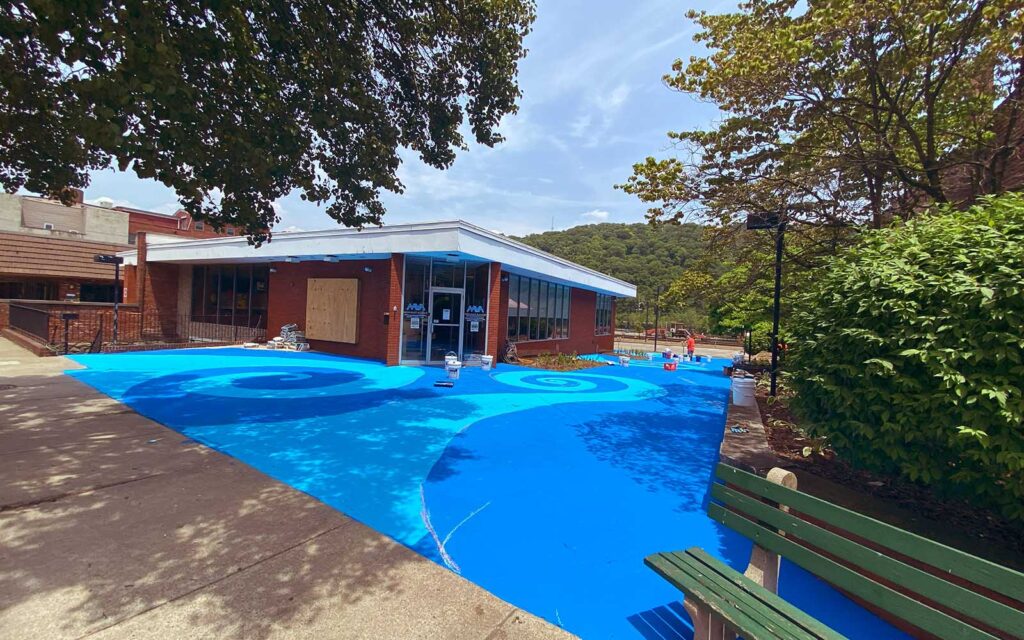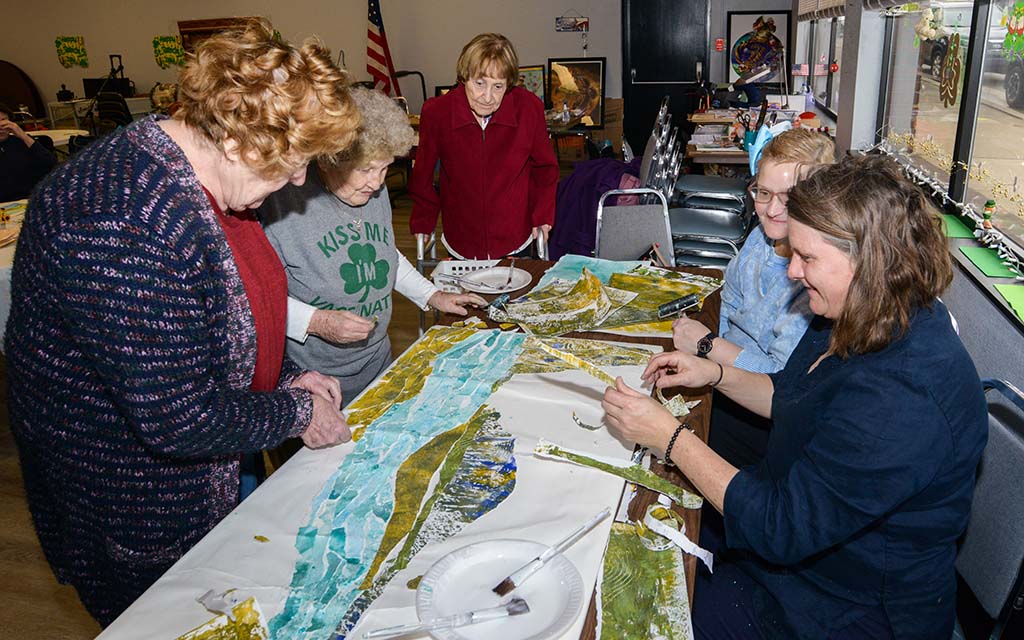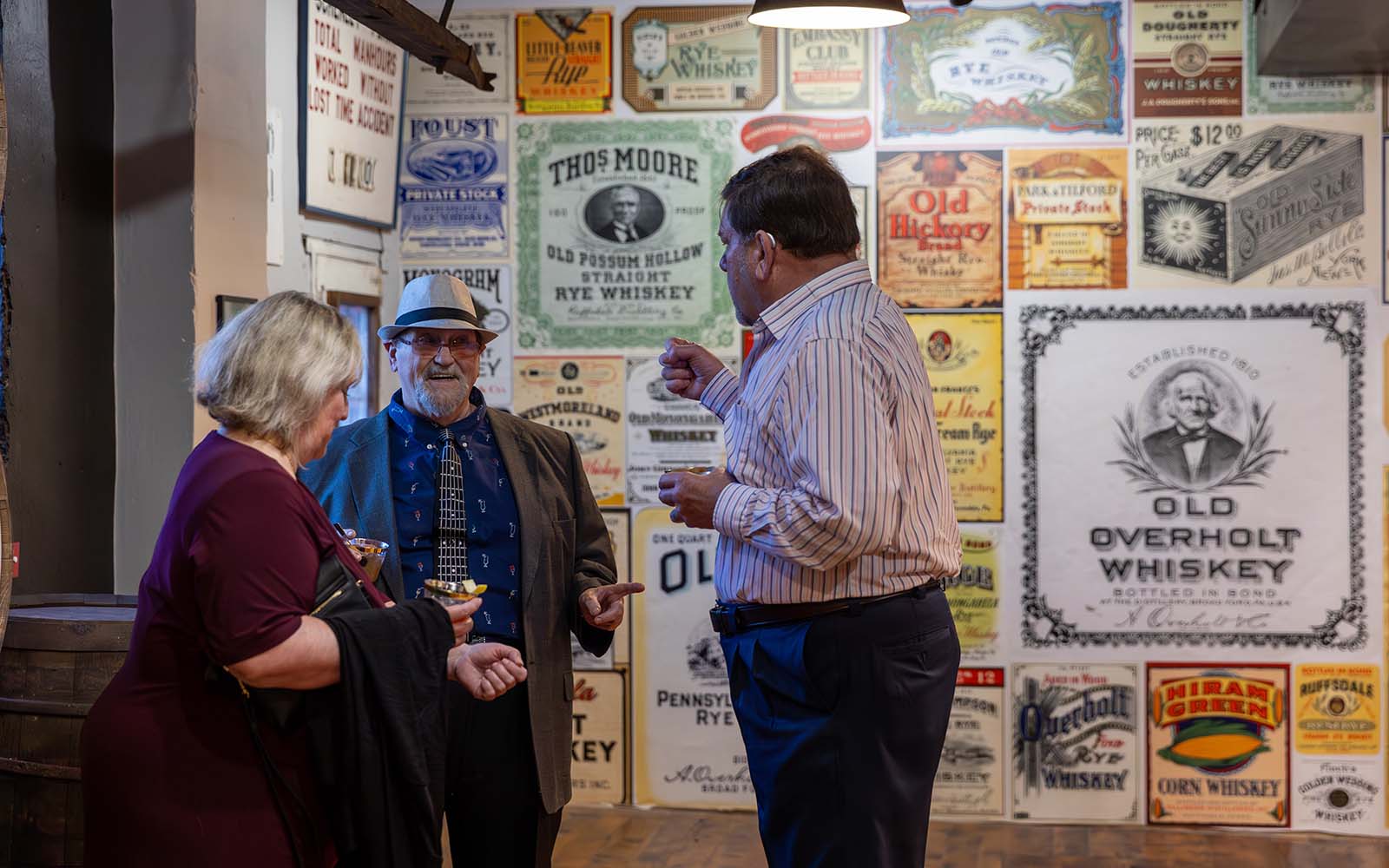
Community Spotlight—West Overton’s James B. Beam Pennsylvania Whiskey Heritage Center
The Community Spotlight series features the efforts of Rivers of Steel’s partner organizations, along with collaborative partnerships, that reflect the diversity and vibrancy of the communities within the Rivers of Steel National Heritage Area.
By Julie Silverman, Contributing Writer
A New Era for West Overton
Rye whiskey is making a comeback, and so is our way of telling stories about it. Surrounded by the agricultural countryside of Westmoreland County, you’ll find the town of West Overton, the birthplace of industrialist Henry Clay Frick. West Overton Village & Museum is also the ancestral home of the longest standing American whiskey brand, Overholt™—or Old Overholt as it’s known colloquially. This iconic brand has endured in an unbroken chain of production since 1810.
The land and home of Abraham Overholt, the founder of the brand, was preserved due to the efforts of Helen Clay Frick who purchased and conserved the site to honor her father. As early as 1928, she turned the family’s homestead, which includes a five-and-a-half story building that once housed the Overholt distillery and gristmill, into a museum.
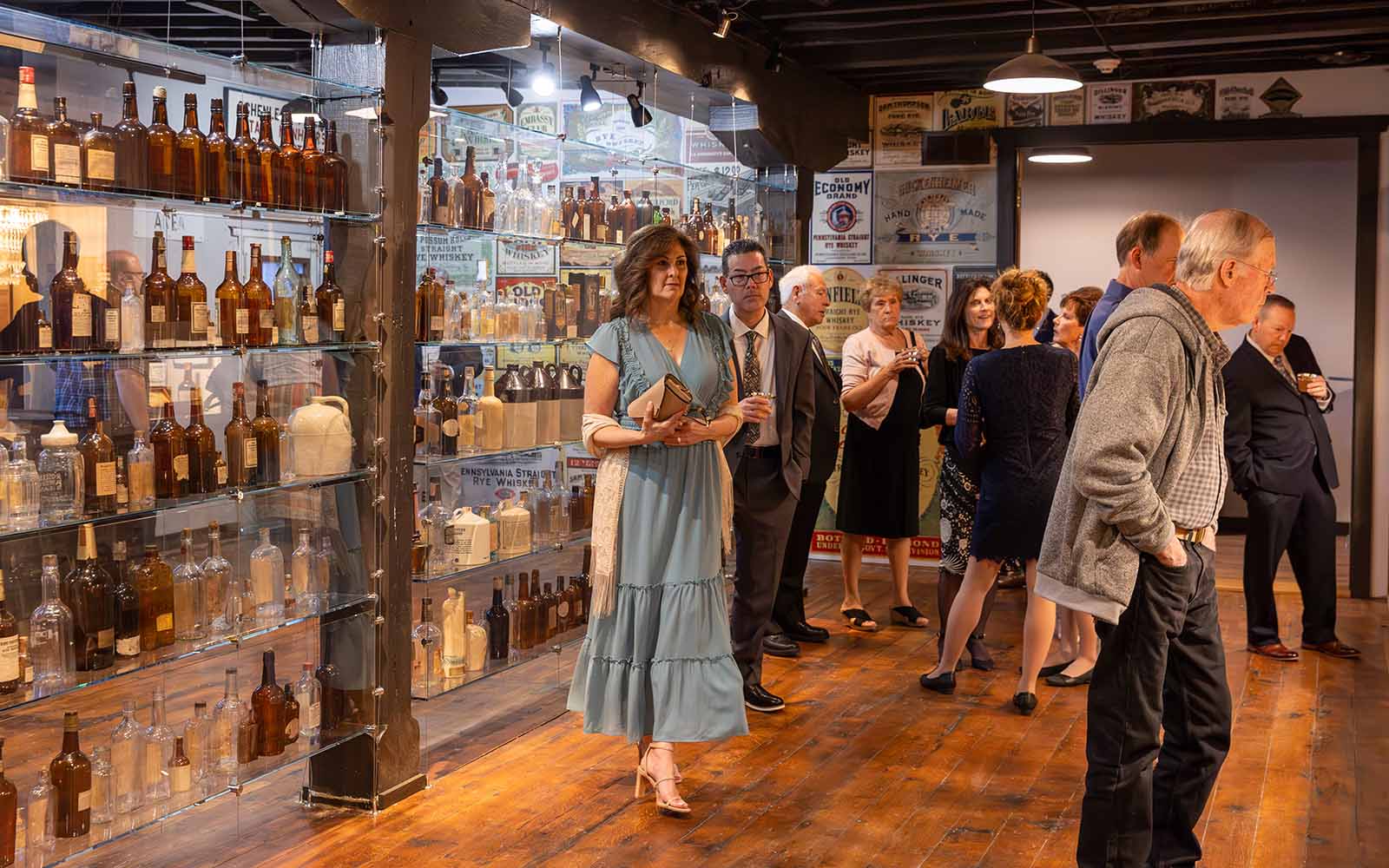
Patrons celebrate the opening of a new exhibition space at West Overton. Photo by Savannah Butler.
The James B. Beam Pennsylvania Whiskey Heritage Center
This summer, the celebrated historic site is offering a brand-new experience. In collaboration with Suntory Global Spirits, the museum’s reimagined and updated second floor was recently unveiled. A key piece of this partnership’s purpose is to celebrate the history and legacy of Western Pennsylvania’s rye whiskey industry. Opening the James B. Beam Pennsylvania Whiskey Heritage Center is a watershed moment in presenting the storied history of Western Pennsylvania and Pennsylvania Rye Whiskey, also known as Monongahela Rye.
Aaron Hollis, the co-executive director of West Overton Village, shared, “There’s nowhere else that has this type of exhibit and story about Pennsylvania’s whiskey industry. A historical society or museum could have a few bottles from a local distillery, but this is the largest publicly displayed collection of Pennsylvania whiskey history anywhere.”
Pam Curtin, the museum’s director of visitor engagement, added, “The breadth of the collection is really remarkable. We think of Pennsylvania industry as coal and steel and agriculture, but the whiskey industry was significant to Pennsylvania. Pennsylvania Rye was known around the country. Many brands were known around the world, and a lot of that history has been lost. There’s not really a place, other than right here, where you can go and see that.”
The centerpiece of the Heritage Center is the Sam Komlenic Gallery. Displayed inside this gallery are more than 450 objects dedicated to Pennsylvania’s rye whiskey production. “There are bottles, advertisements, crates, memorabilia, barrels, labels, and all sorts of different artifacts related to the industry,” Hollis said.
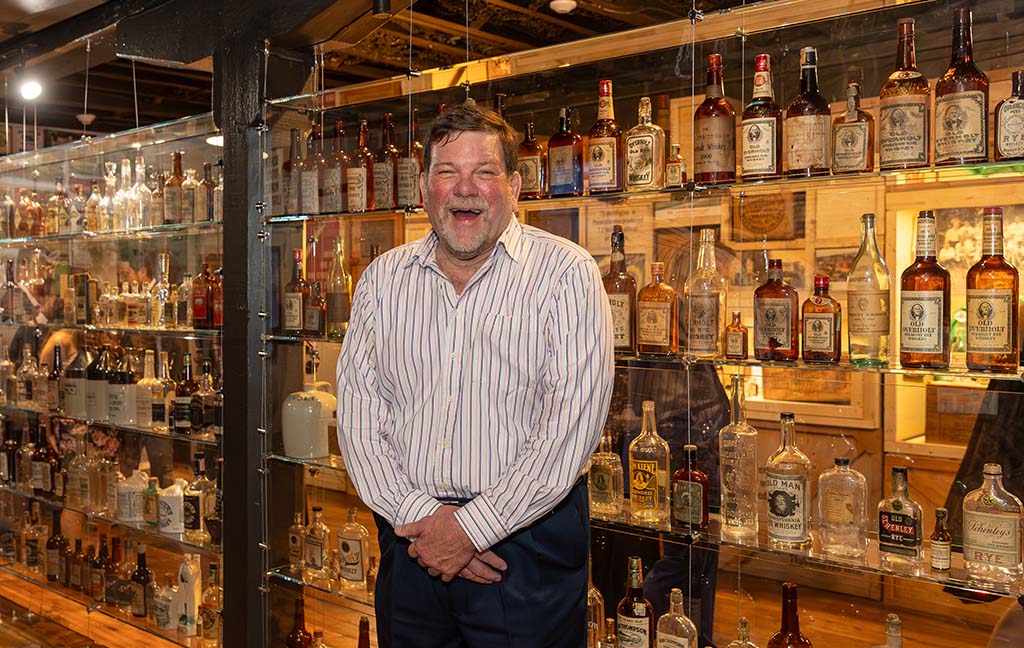
Collector and donor Sam Komlenic in the gallery named after him. Photo by Savannah Butler.
The heart of the gallery is a wall of bottles. Floating glass shelves hold more than 260 whiskey bottles from Pennsylvania distilleries, including bottles from when Overholt™ was produced in Broad Ford (or Broadford), Pennsylvania, from the era after production ended at West Overton. About 40 historic distilleries are represented of the more than 70 that were present in Pennsylvania in 1900. Names such as Dillinger, Gibson, and Schenley join Overholt as some of the most successful companies in the industry.
Curtin said, “It’s amazing that some of these bottles were able to survive. We also have memorabilia, from special-edition bottles to matchsticks and playing cards, which gets into how they were branding themselves. One wall of the gallery has high-resolution images of whiskey labels. Vinyl art pieces on the wall show the artistic branding that companies started to do, and that display resonates with people as well.”
One climate-controlled collections room is dedicated to viewing fragile objects that are part of a sampling of the museum’s 96 years of collecting. Textile artifacts share a space in the collection as well as more unique items, including a two-headed taxidermy calf, a 1940s X-ray machine, and a desk from the Frick office building.
Artifacts tell stories. They bring to light life in the region that goes beyond the whiskey industry itself. “We’ll be using the space for children’s programs, for field trips, taking student groups through there. We’ll use these objects as an opportunity to talk about life in the past and what the museum does, how a museum preserves objects. It’s a nice space for people to see what a collection looks like, how we store things, and how we preserve them,” Curtin said.
The new classroom in the Heritage Center is intended to be a multipurpose room. Biergarten-style tables fill the classroom that connects to the collections room. The education space connects both to the collections, and to a vintage-inspired, handcrafted bar and lounge.
“The Overholt Stateroom has got to be one of the most beautiful bars in the county,” Hollis said. “People go in there and say, ‘Man, I want to smoke a cigar and drink a whiskey in here,’ and that’s really the vibe that it gives.” It’s a top-notch, fully functioning bar decked out in Overholt’s artwork, including a line drawing of Abraham Overholt on the wall. The bar and lounge are a space that people can rent out for special private events with the added use of the attached classroom as part of the space.
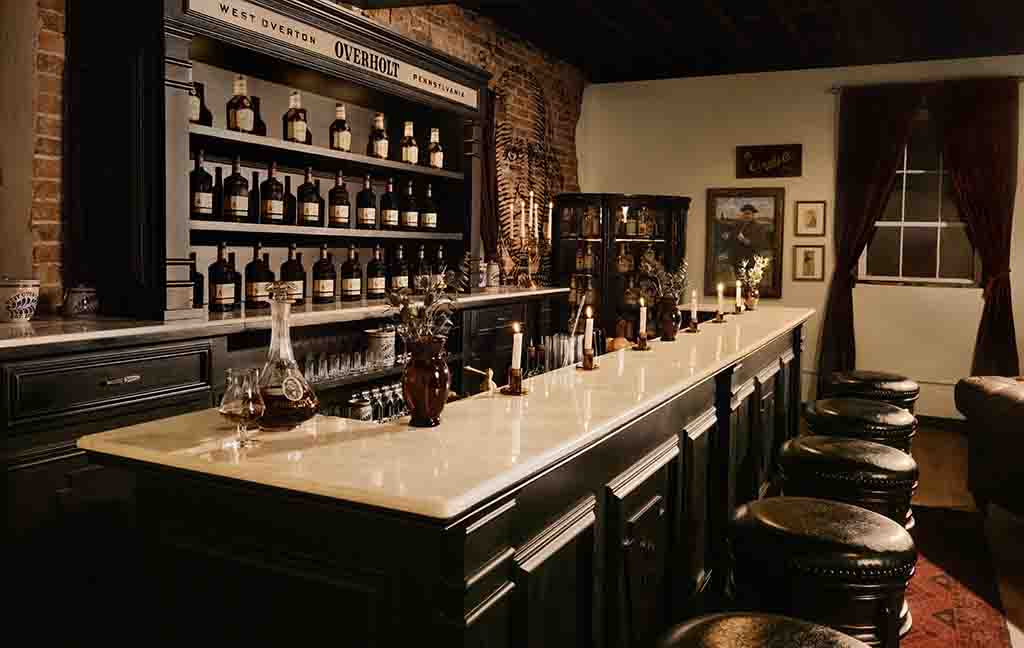
The Overholt Stateroom. Photo by Cole Wilson.
A Resurgence for Rye Whiskey
Rye whiskey’s resurgence is benefitting tourism and the economy as the legendary drink is returning to the limelight. Following the region’s whiskey trail—including sites related to the Whiskey Rebellion of 1794—has been enticing new connoisseurs who are interested in a taste of Pennsylvania’s history.
“You can follow the whiskey trail all through Washington County and back around to West Overton in Westmoreland County and Broadford in Fayette,” said Jaimie Hanson, Rivers of Steel’s director of tourism. “Putting together this new exhibition is a great way to bring in people who are interested in history, tasting, and education. Not only will having the facility bring more people to see West Overton, but also the draw of the varied programming that they already have there.”
“In the past decade, there’s been a growing interest and curiosity among whiskey enthusiasts for Monongahela rye whiskey,” said Lisa Belczyk of The Fizzy Coupe, which offers cocktail experiences and spirits education. “Rye offers a spicy, peppery, and assertive set of flavors that are exciting. The combination of big, bold flavors tied to a storied rebellious legacy has made Monongahela rye whiskey the basis for a complex cocktail of local flavors and history in a glass.”
Why is Western Pennsylvania a rye whiskey hub? “The distillers coming out here may have just had a really great taste for making whiskey,” Curtin said. “There’s a lot of factors that we’re still trying to understand that made Monongahela Rye so unique. What did people think about it, and what did it mean to them back then? We don’t have recipes as you might imagine, so there’s a lot of research being done to understand what somebody in 1850 would have defined as a Monongahela Rye. It’s nice to see a resurgence of interest in distilling today and a lot of the craft distillers wanting to recreate rye of their own.”
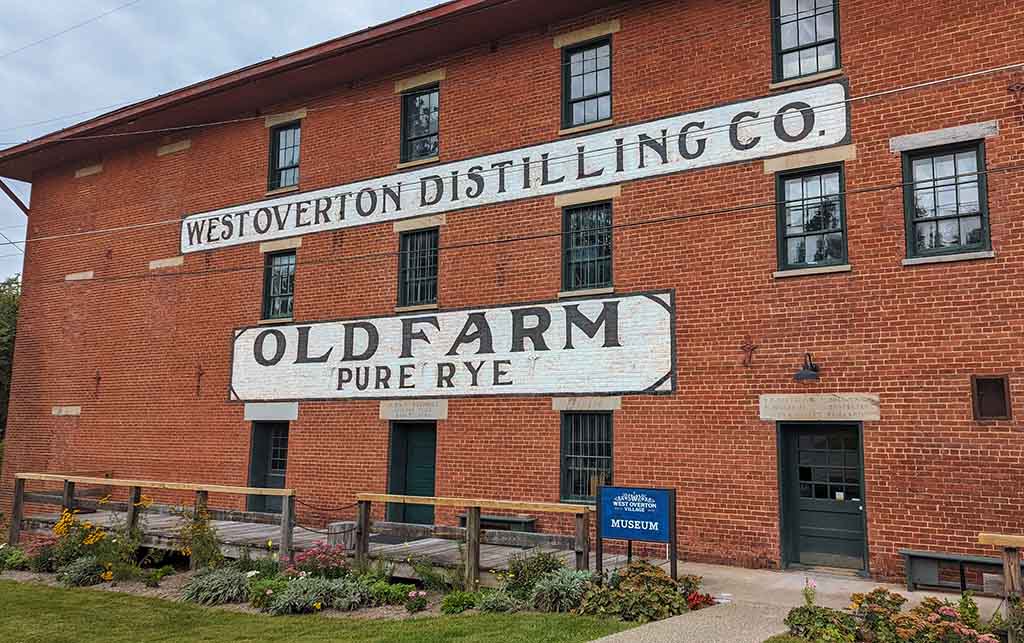
The museum at West Overton Village that houses the new Heritage Center.
A Legacy Intertwined—Rye Whiskey and America
Distilling in America dates to before the Revolutionary War. Once the country gave up rum during the revolution, rye whiskey became the taste of American spirits. Western Pennsylvania built a reputation for whiskey and a network of shipping that took the brand as far west as New Orleans. Abraham Overholt transformed whiskey distilling into a sophisticated industry.
“A lot of people think that whiskey distilling in Pennsylvania stopped after the Whiskey Rebellion,” said Aaron Hollis. “In reality, Pennsylvania had a huge industry of whiskey production that continued largely until Prohibition in 1920. Historically, the family that created West Overton moved here nearly ten years after the rebellion. The context for us is more about when this industry was born and what the state of distilling was.”
Even though rye whiskey distilling made Abraham Overholt a wealthy man, the rye whiskey flavor fell out of favor for many years. Although James B. Beam Distilling Co. has distilled Overholt™ since 1987, the allure of having an authentic experience with the place that created the iconic brand shaped the idea for the Whiskey Heritage Center.
It is rare to be able to visit the authentic home place of a whiskey brand. “It’s the spiritual home of a legacy whiskey,” said Hollis. “Suntory wanted people to have an authentic experience at the home place of that brand. The James B. Beam Pennsylvania Whiskey Heritage Center is the culmination of that partnership.”
(It’s helpful to understand the relationship between Suntory and Beam. The Japanese company Suntory Holdings acquired Beam Inc. in 2014 and became known as Beam Suntory; in May of 2024, the Beam Suntory company name was rebranded to Suntory Global Spirits.)
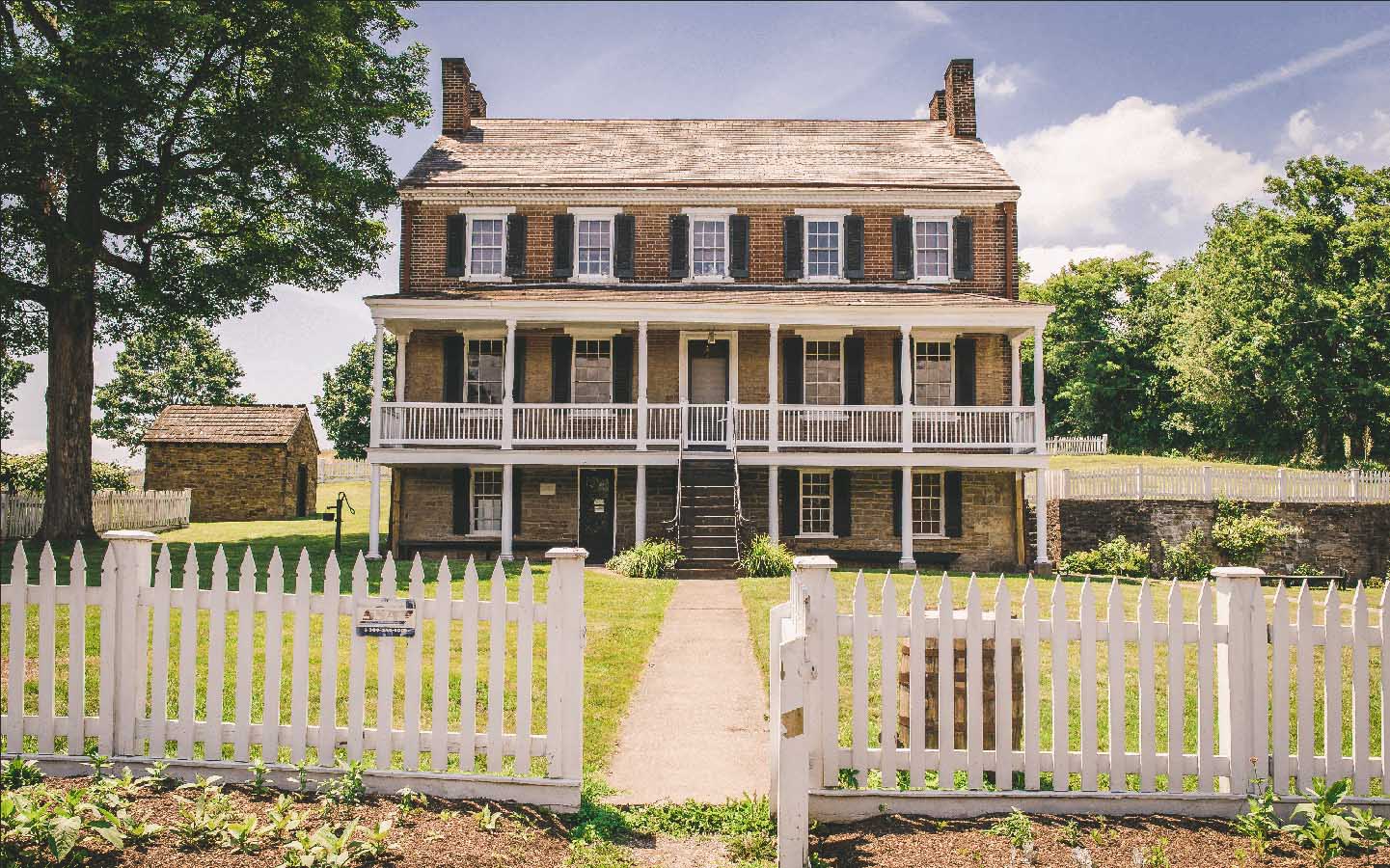
The homestead at West Overton.
Experience West Overton Village
“The unique part about West Overton is that Helen Clay Frick was able to preserve the site,” said Pam Curtin. “When we were researching some of the other distilleries, we saw how quickly they were closed or dismantled, or sold off to other companies to become something else. When Prohibition happened, Helen was able to preserve the distillery building as a museum. She helped make the site publicly accessible. That’s another rare dimension of this site: that the historic house and the whole collections building have been able to survive at all.”
The James B. Beam Pennsylvania Whiskey Heritage Center adds more depth to an already layered experience, one that begins with the historic legacy of Abraham Overholt, touches upon our region’s industrial history with Henry Clay Frick, and was preserved with the help of his daughter Helen. The compelling new display provides one more reason to visit the Village near Scottdale, Pennsylvania, adding a highlight to the already award-winning museum where guests follow the lives of 19th-century West Overton inhabitants. In 2020, the nonprofit opened its own Educational Distillery, producing its own brand of Monongahela Rye varieties. Three years later, its Forging Ahead and Falling Behind: Industrial Growth in a Rural Community exhibit was honored with the nationally prestigious Award of Excellence by the American Association for State and Local History.
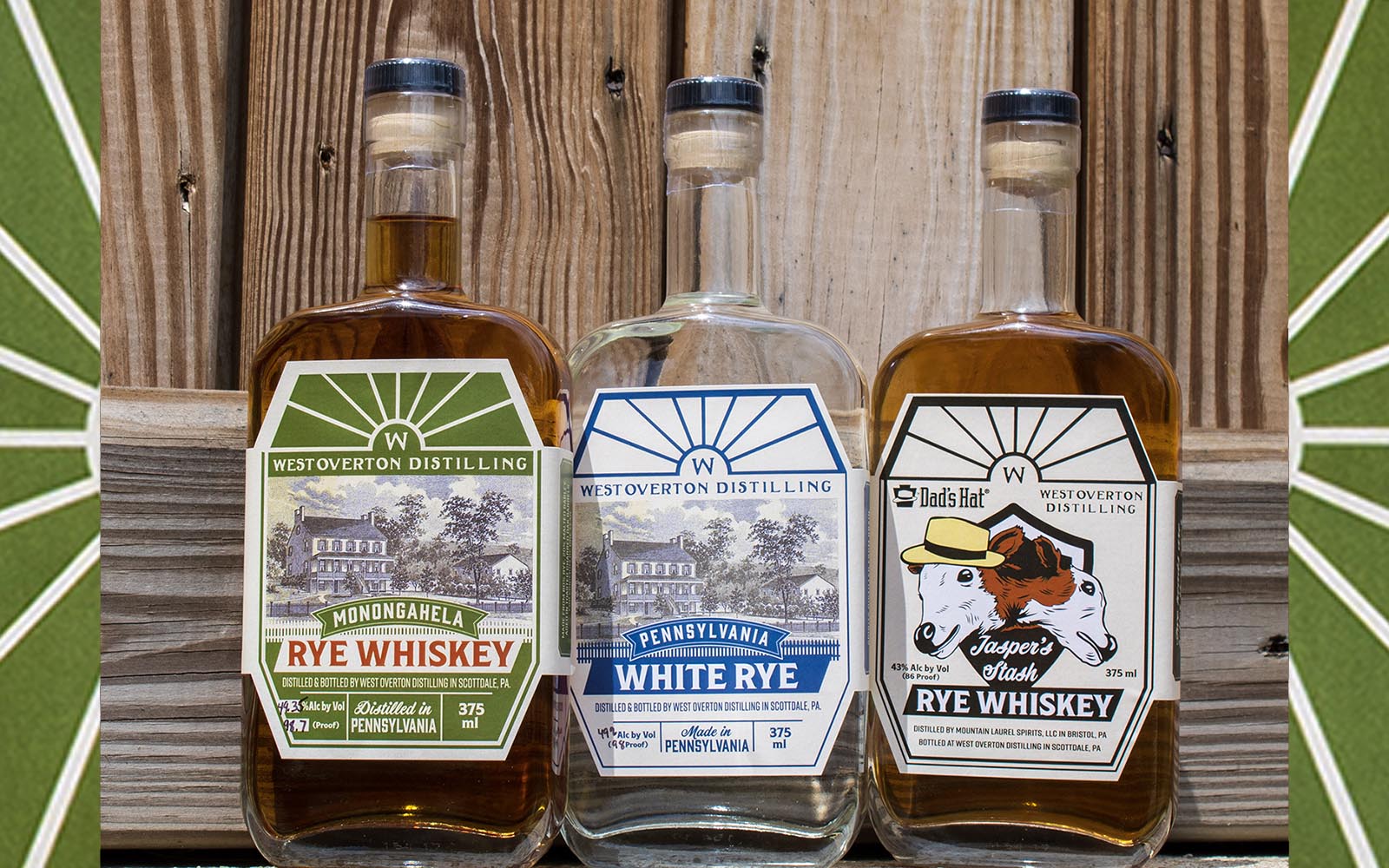
West Overton Distilling Company Products
Stroll through the homestead of West Overton Village, which is listed on the National Register of Historic Places. Regular site and museum visiting hours are May – October, Thursday through Sunday, from 10:00 a.m. – 4:00 p.m.
The lively history of West Overton Village will become a tactile experience for visitors who take part in the upcoming annual DIY History Weekend festivities, on Saturday and Sunday, July 20 and 21. There will be an array of activities in which to participate, from history-inspired crafts to playing games that were popular in the 19th century. (Rivers of Steel will have a tent set up with samples and stories of steel industry and production, much of which was made possible by the manufacture of coke from the local area’s natural resources.)
Although the Whiskey Heritage Center will not be open for the DIY History Weekend, the Educational Distillery will be! Guests can stop by for rye whiskey samples, cocktails, and bottle purchases. Even for those who have visited West Overton before, there’s a whole new chapter to discover!
 Julie Silverman is a museum educator, tour facilitator, and storyteller of astronomy and history for various Pittsburgh-area organizations, including Rivers of Steel. A Chatham University 2020 MFA graduate, her writing is most often found under the byline of JL Silverman. Occasionally, under the name of Julia, she has been seen on TV.
Julie Silverman is a museum educator, tour facilitator, and storyteller of astronomy and history for various Pittsburgh-area organizations, including Rivers of Steel. A Chatham University 2020 MFA graduate, her writing is most often found under the byline of JL Silverman. Occasionally, under the name of Julia, she has been seen on TV.
If you’d like to read our previous Community Spotlight story about West Overton, click here.

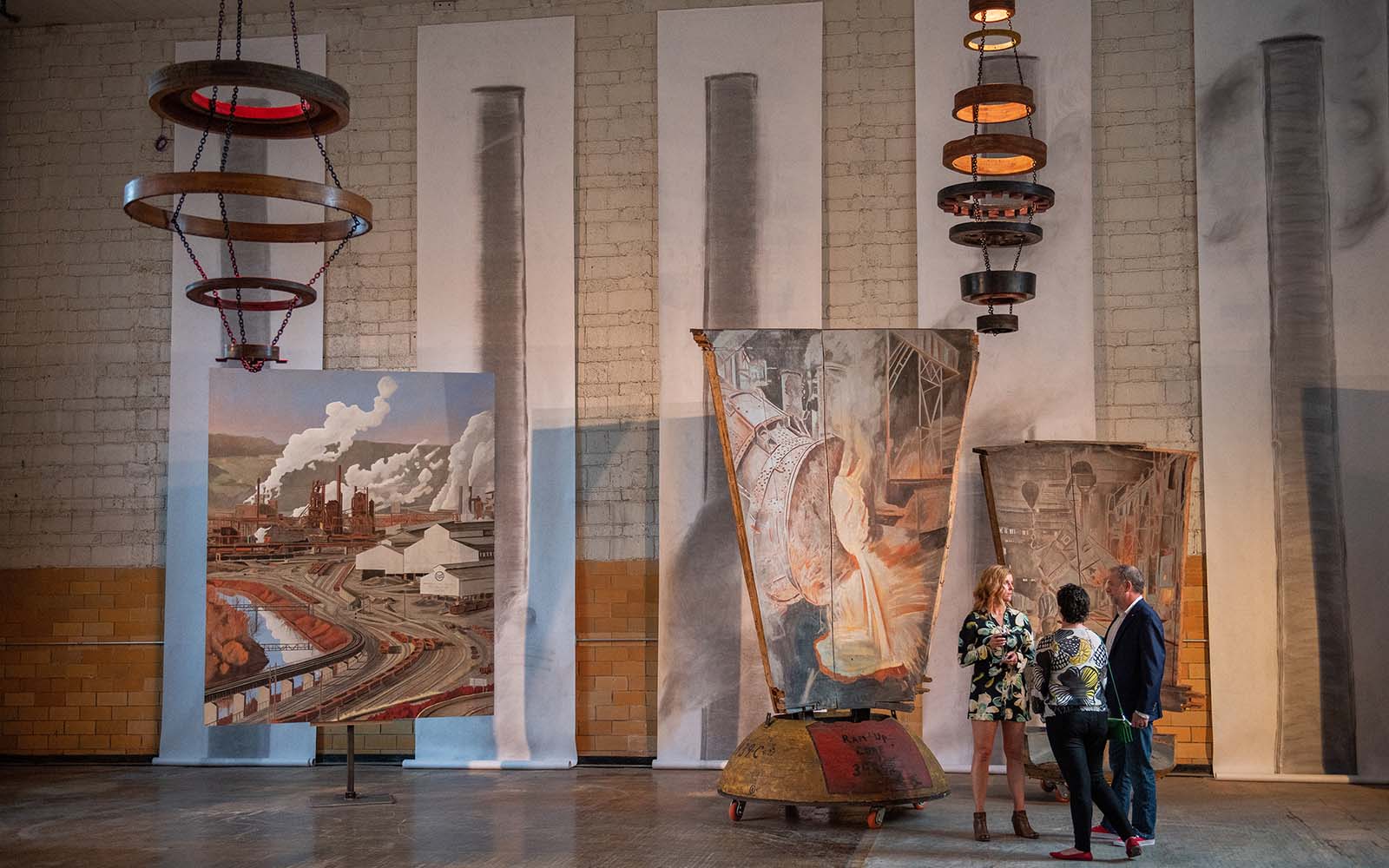
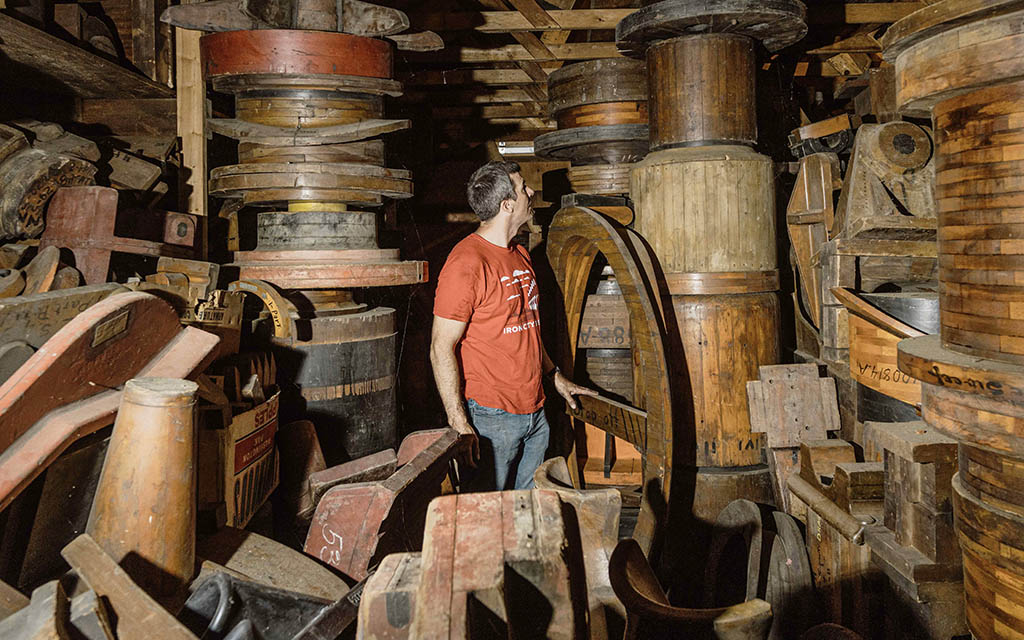
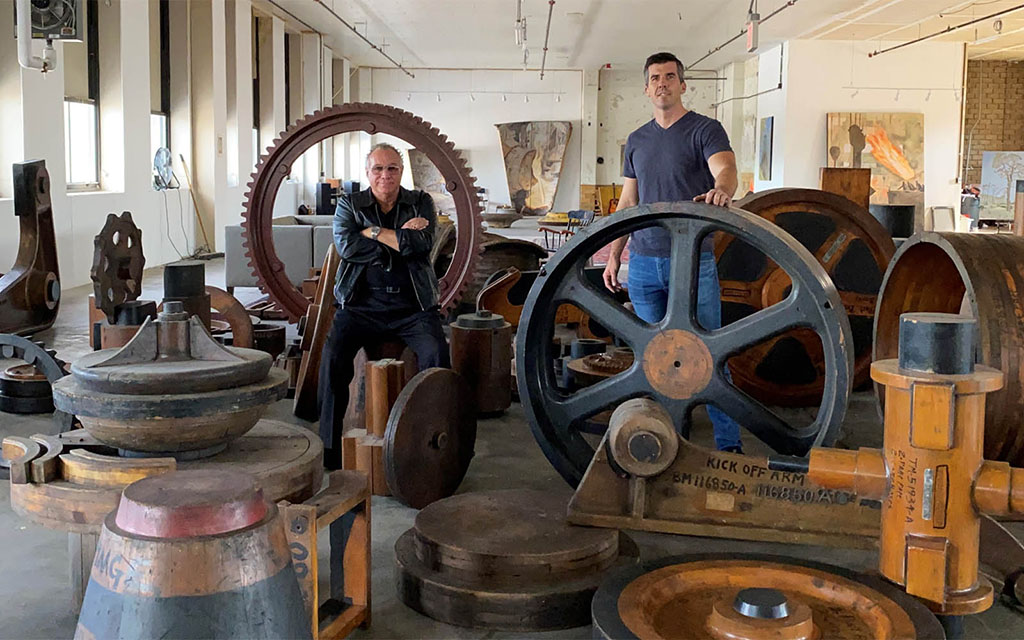
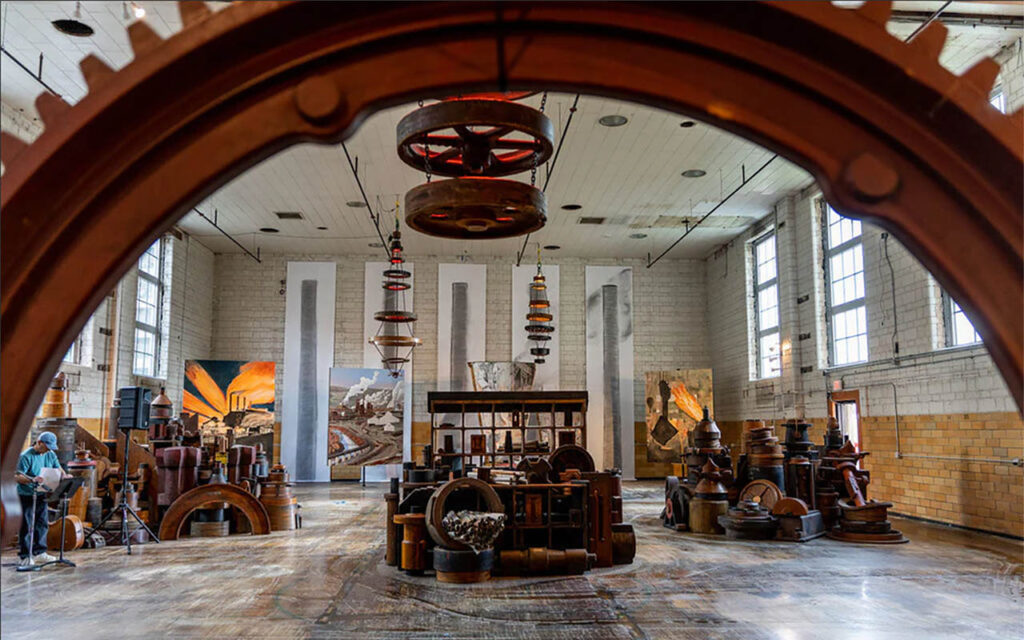
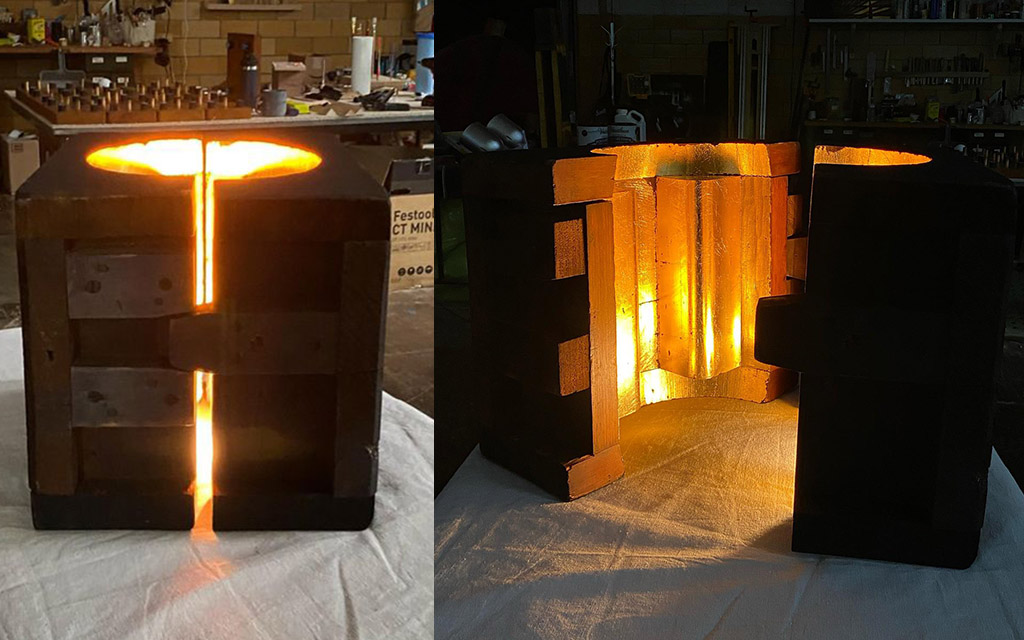
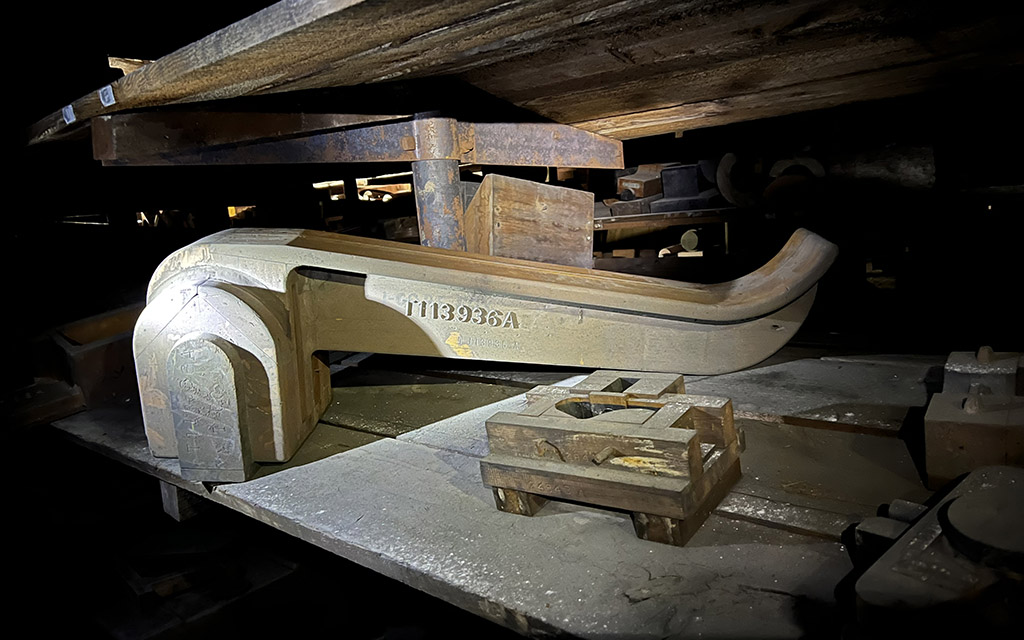
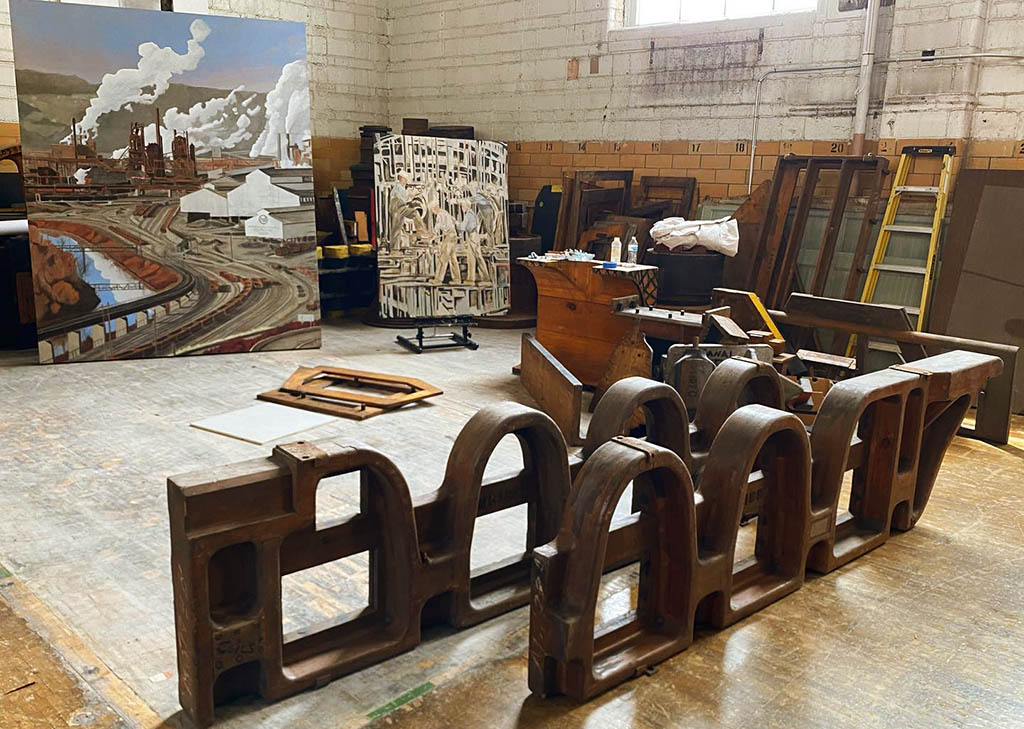
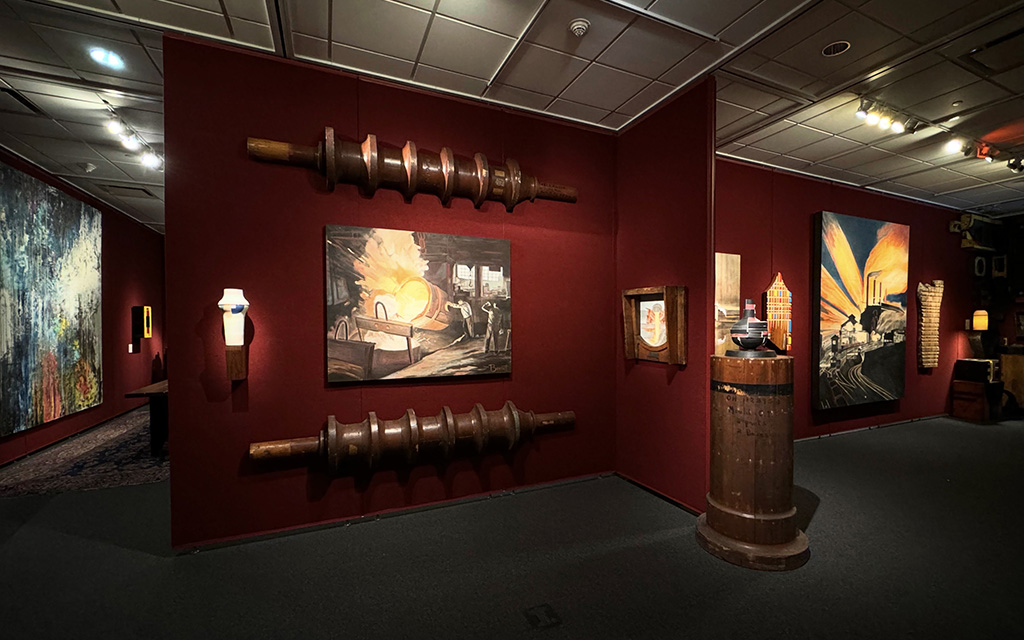
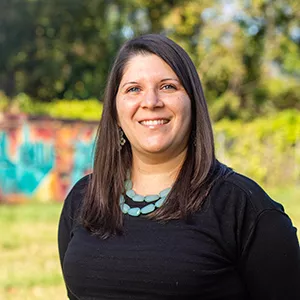 Gita Michulka is a Pittsburgh-based marketing and communications consultant with over 15 years of experience promoting our region’s arts, recreation, and nonprofit assets.
Gita Michulka is a Pittsburgh-based marketing and communications consultant with over 15 years of experience promoting our region’s arts, recreation, and nonprofit assets. 